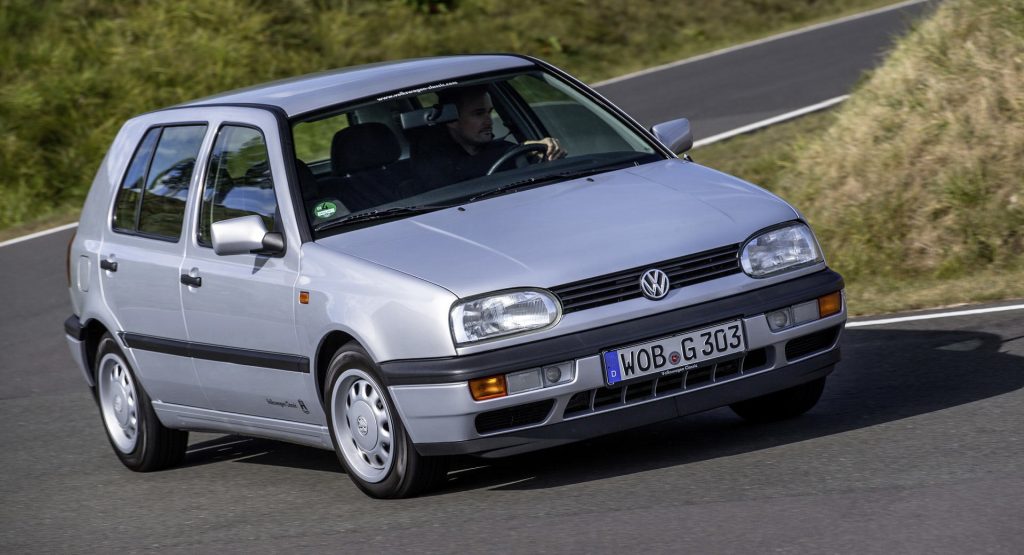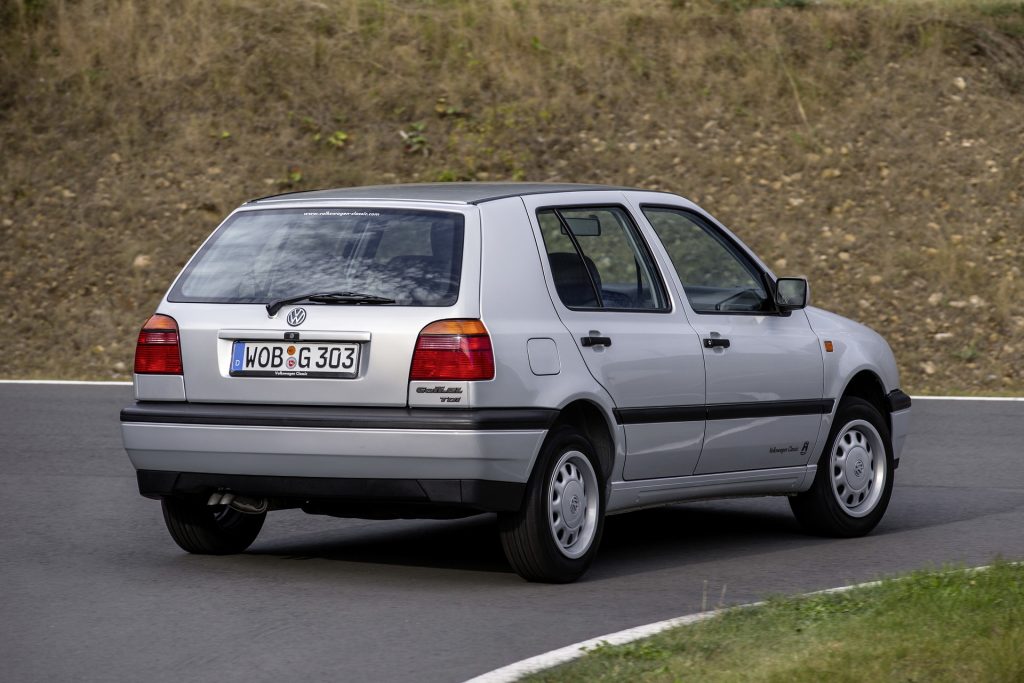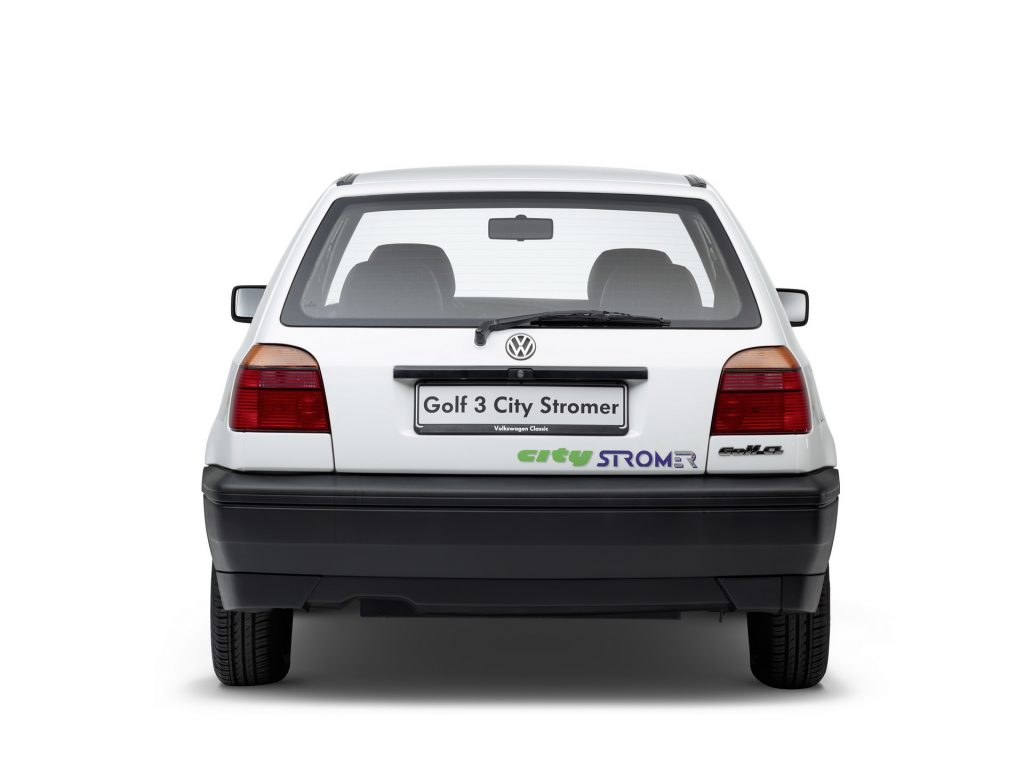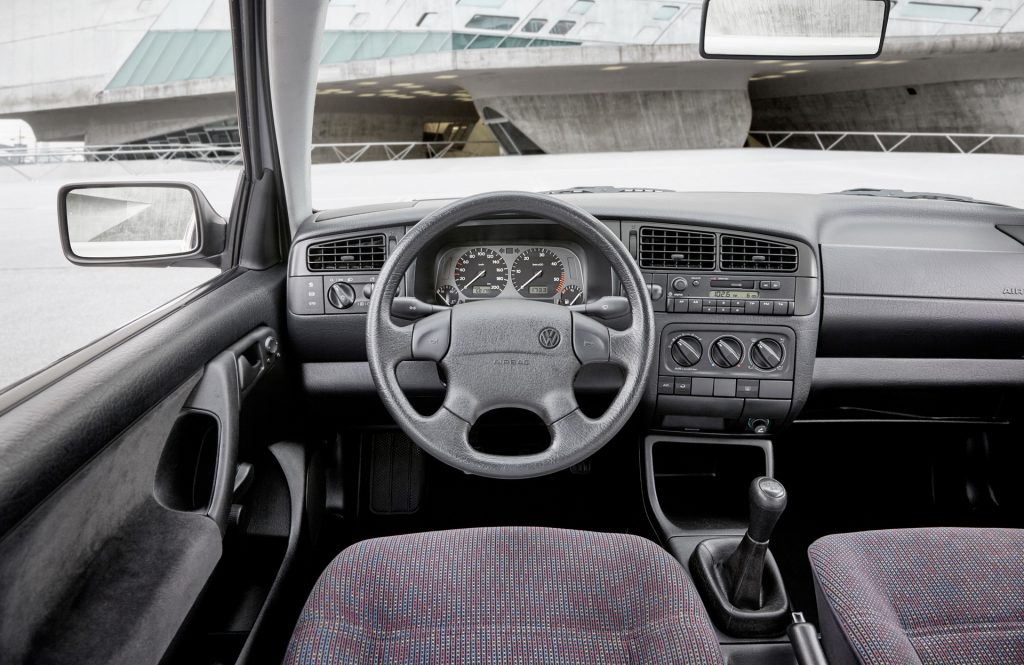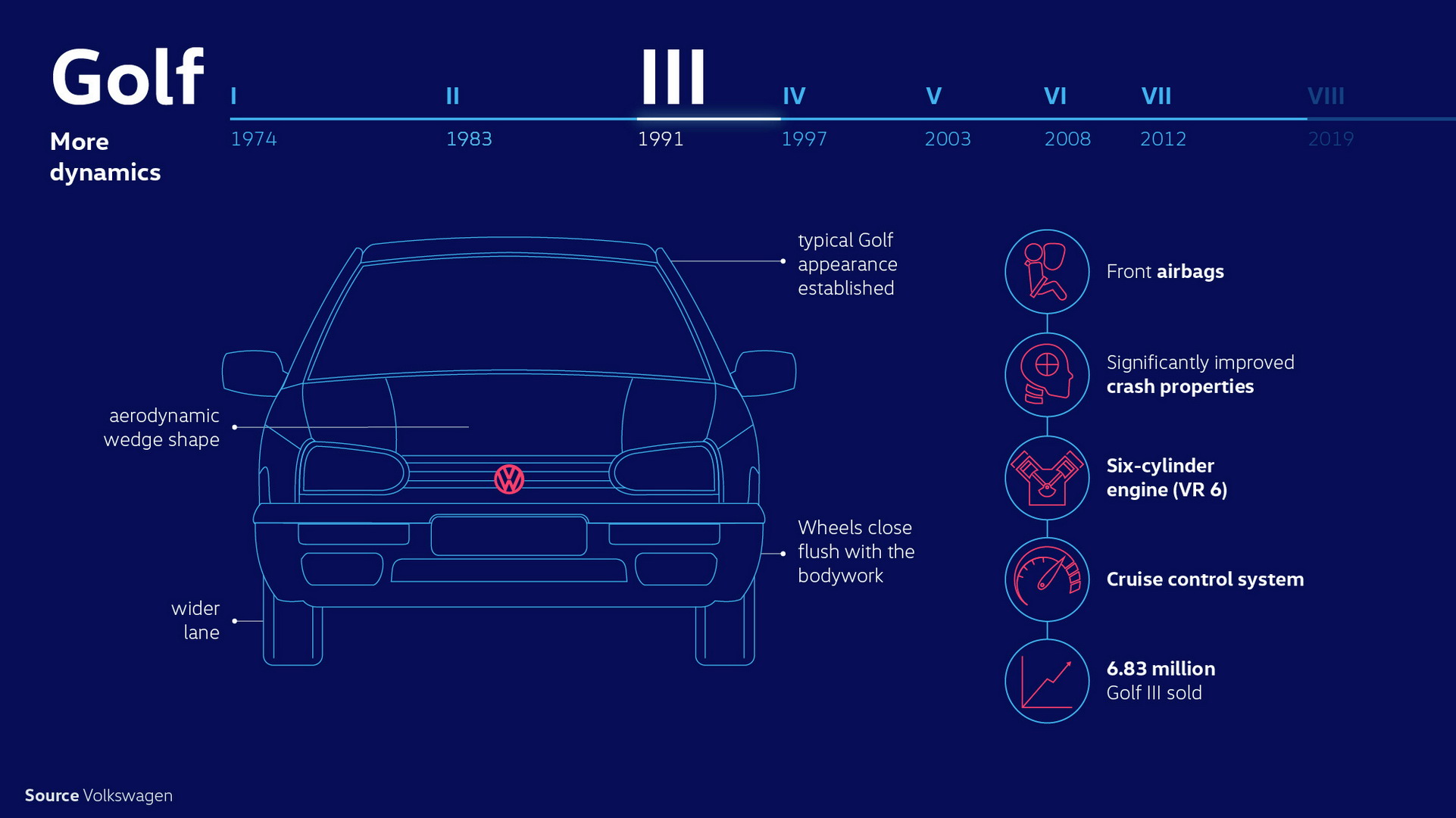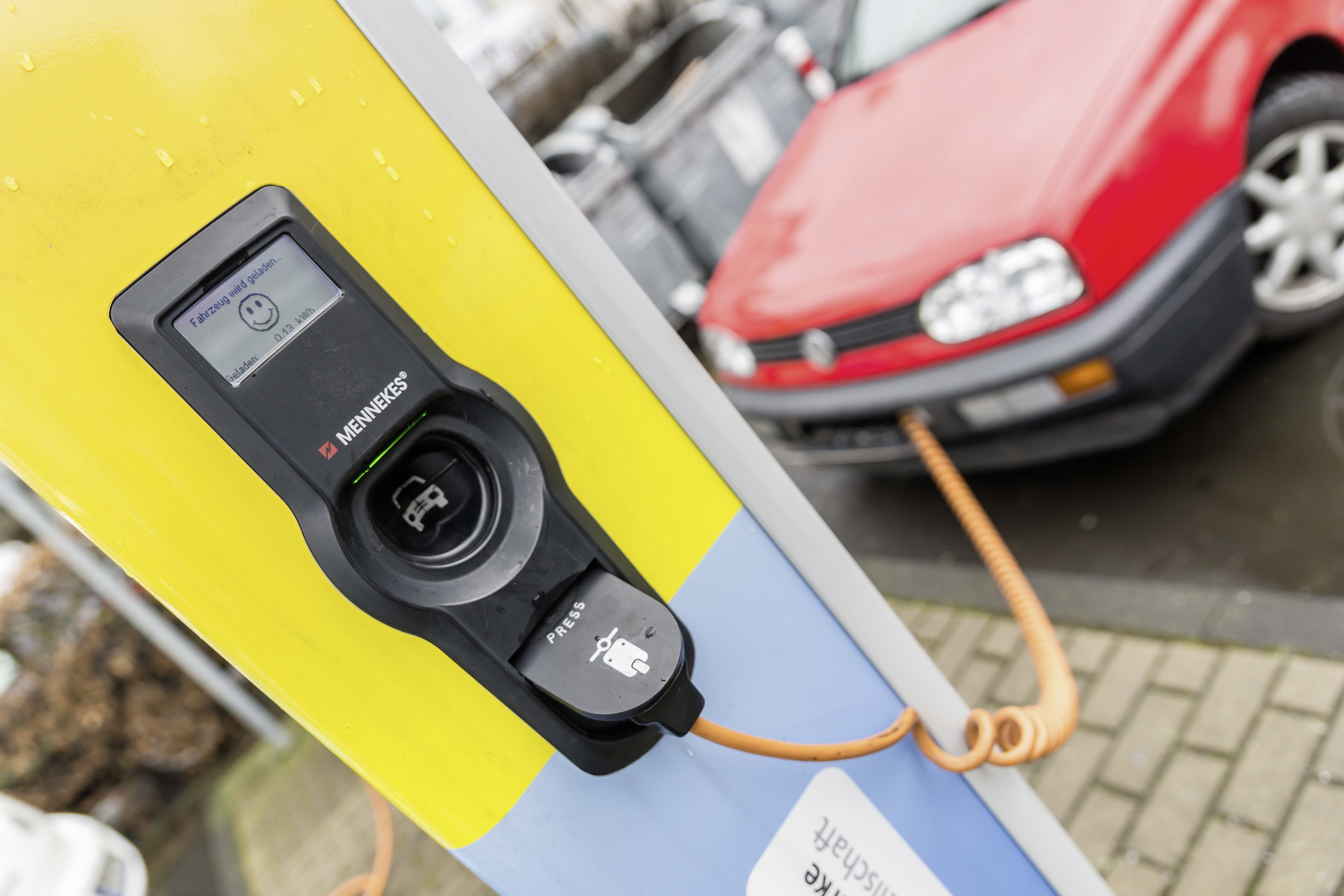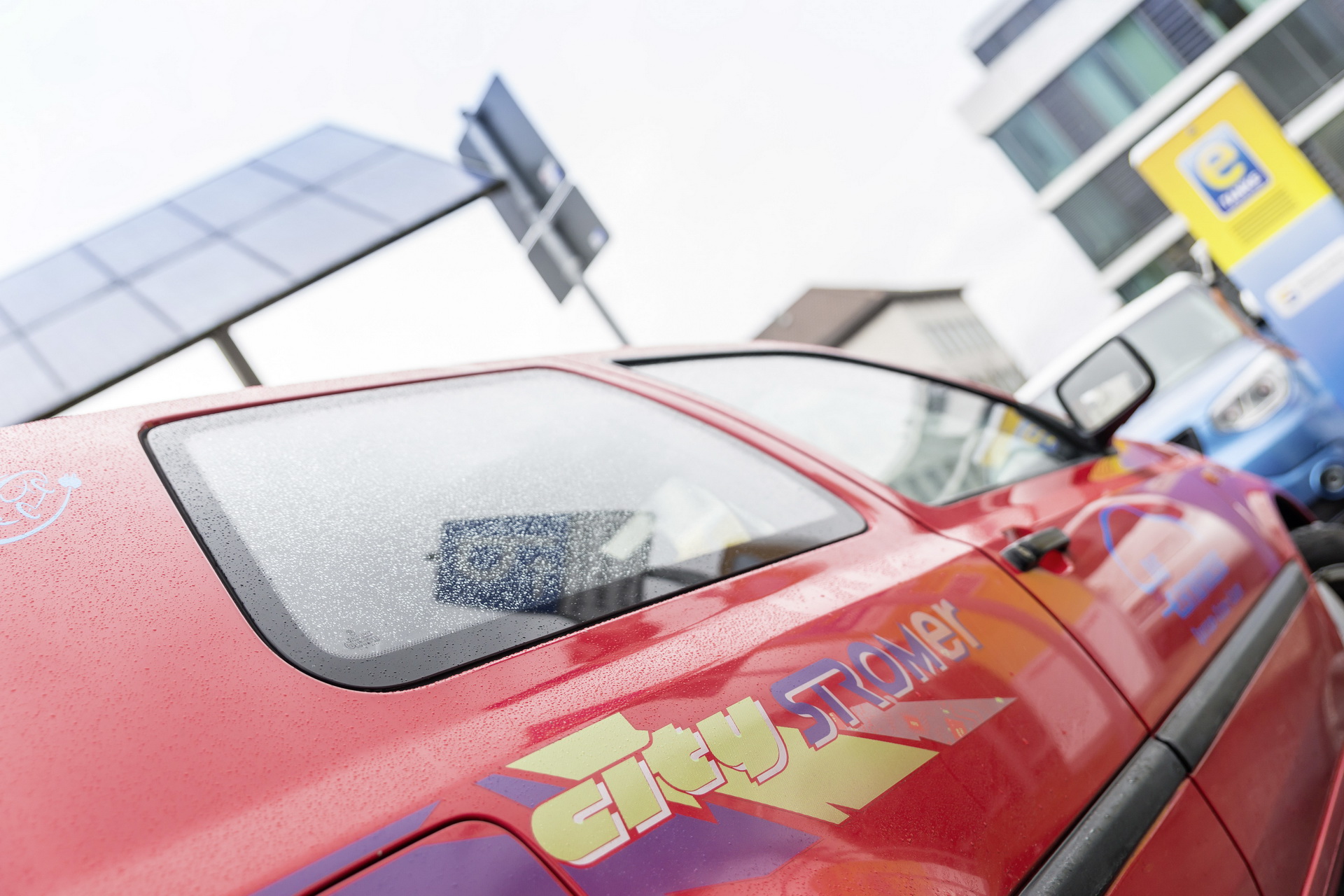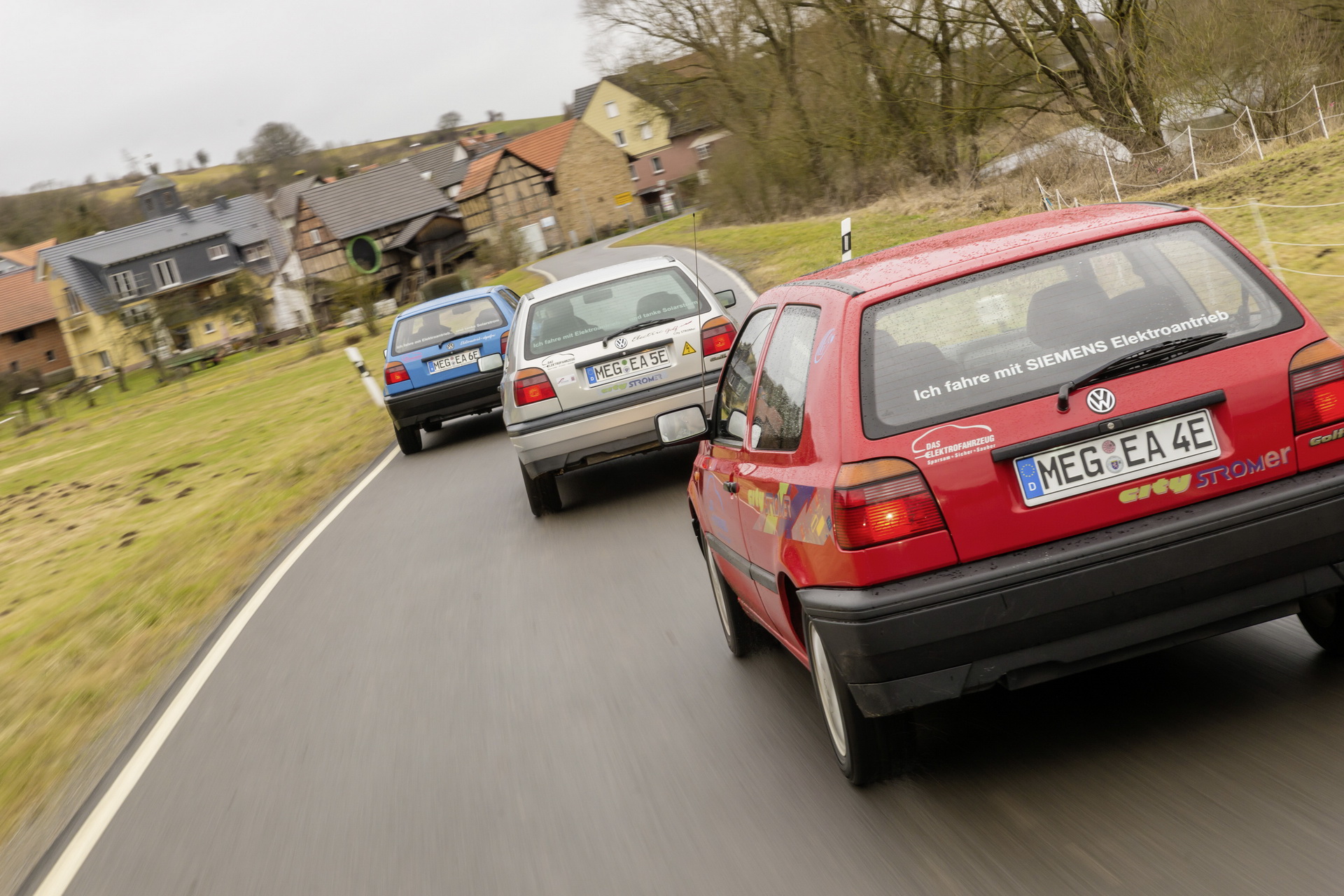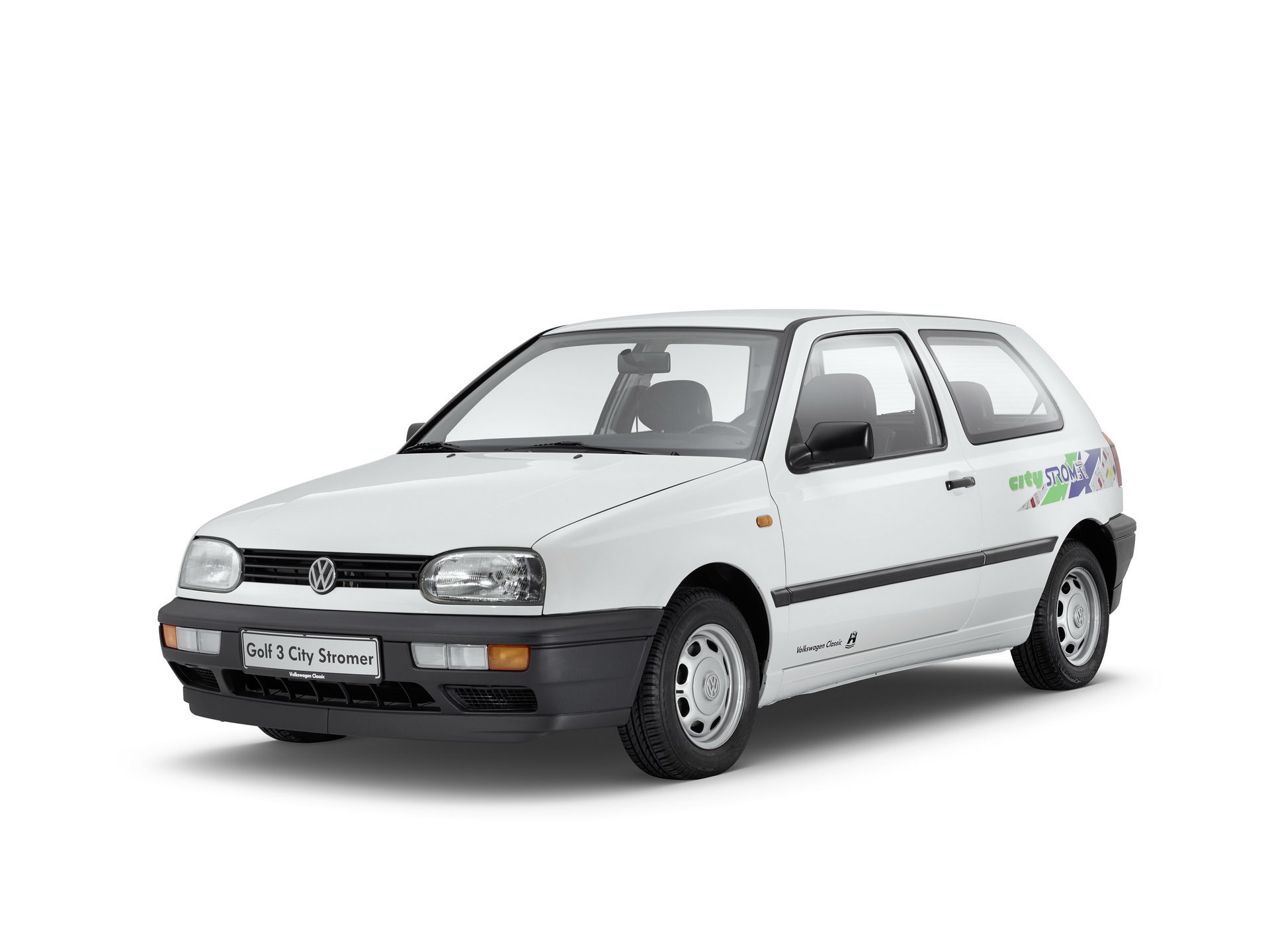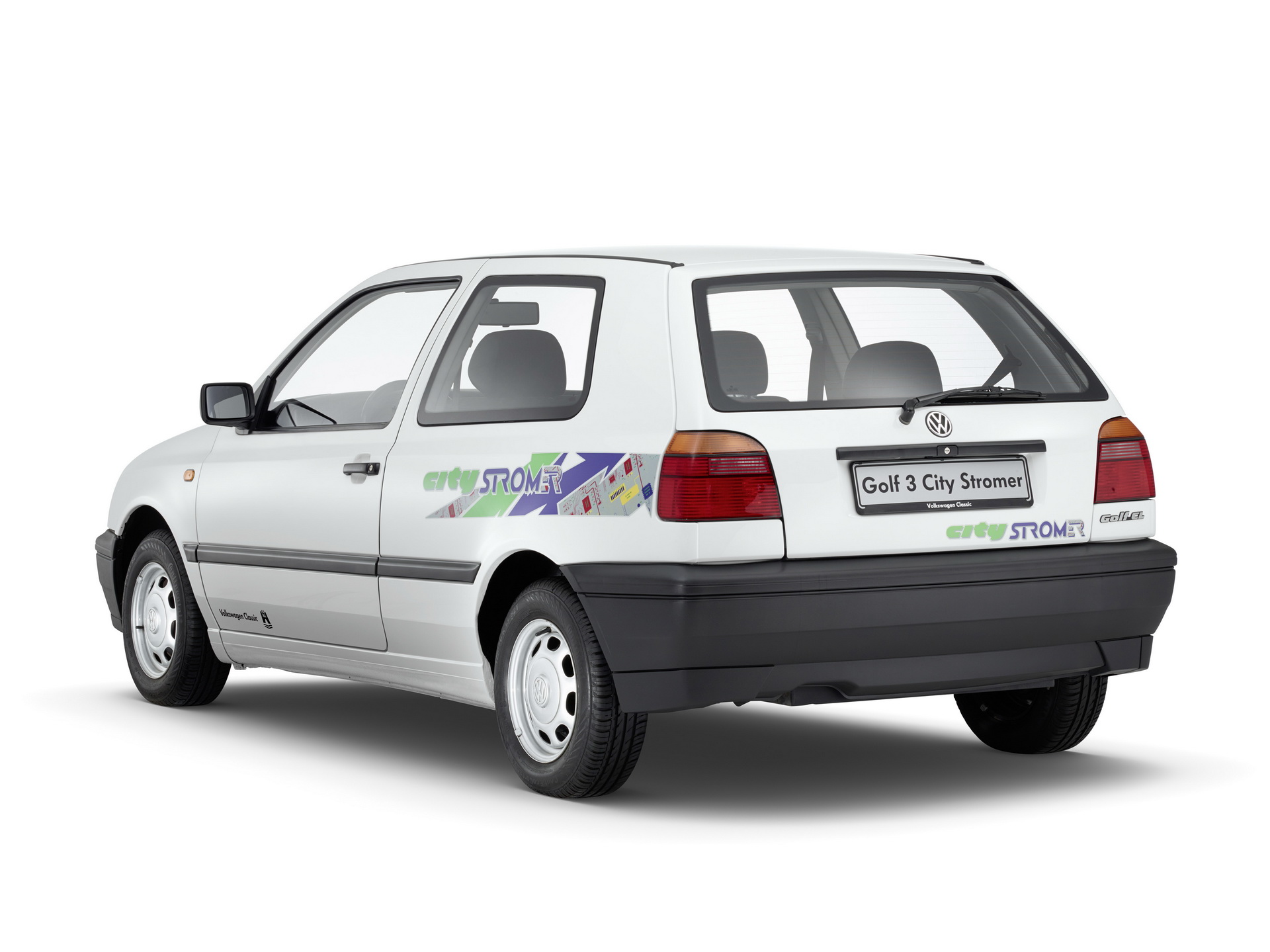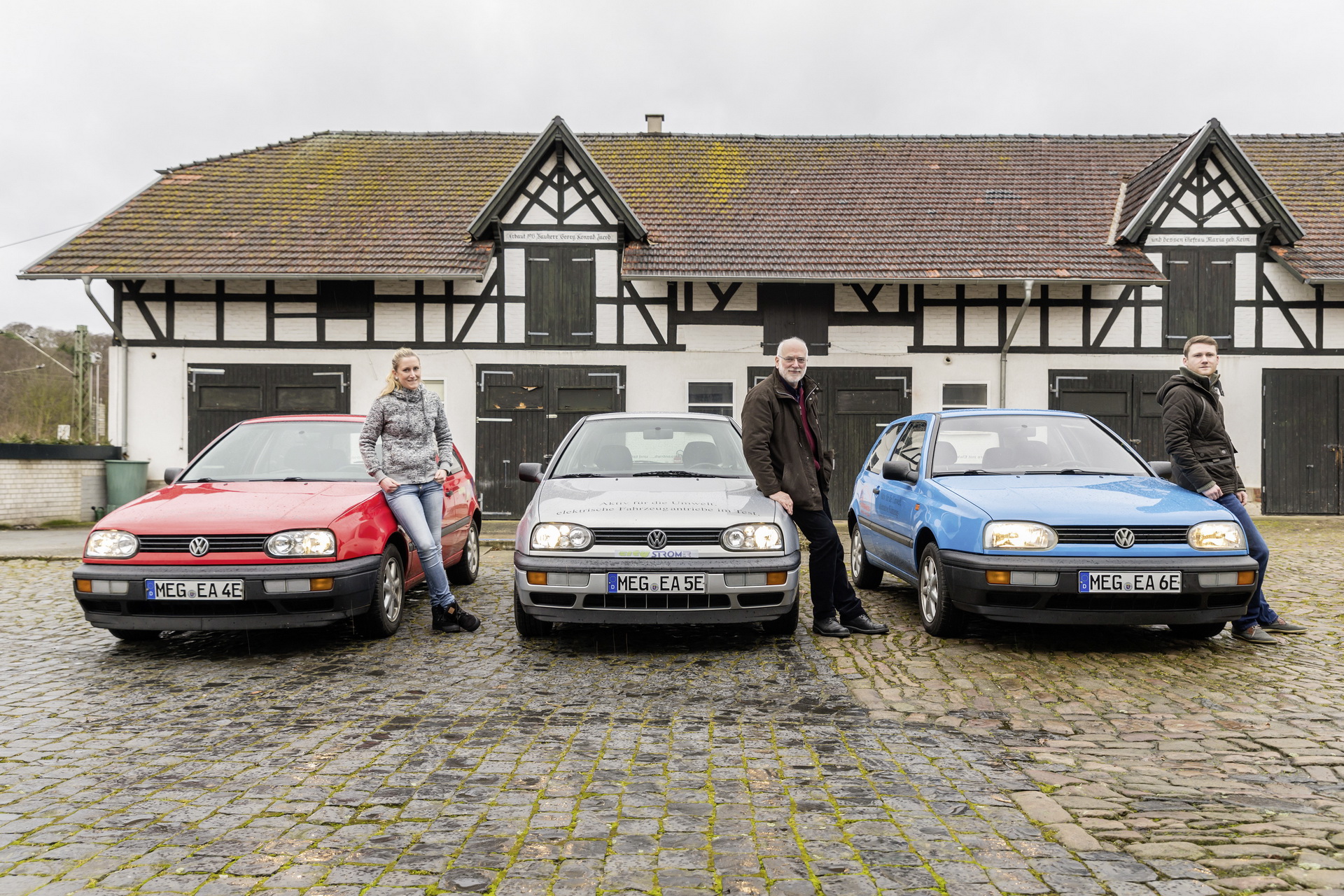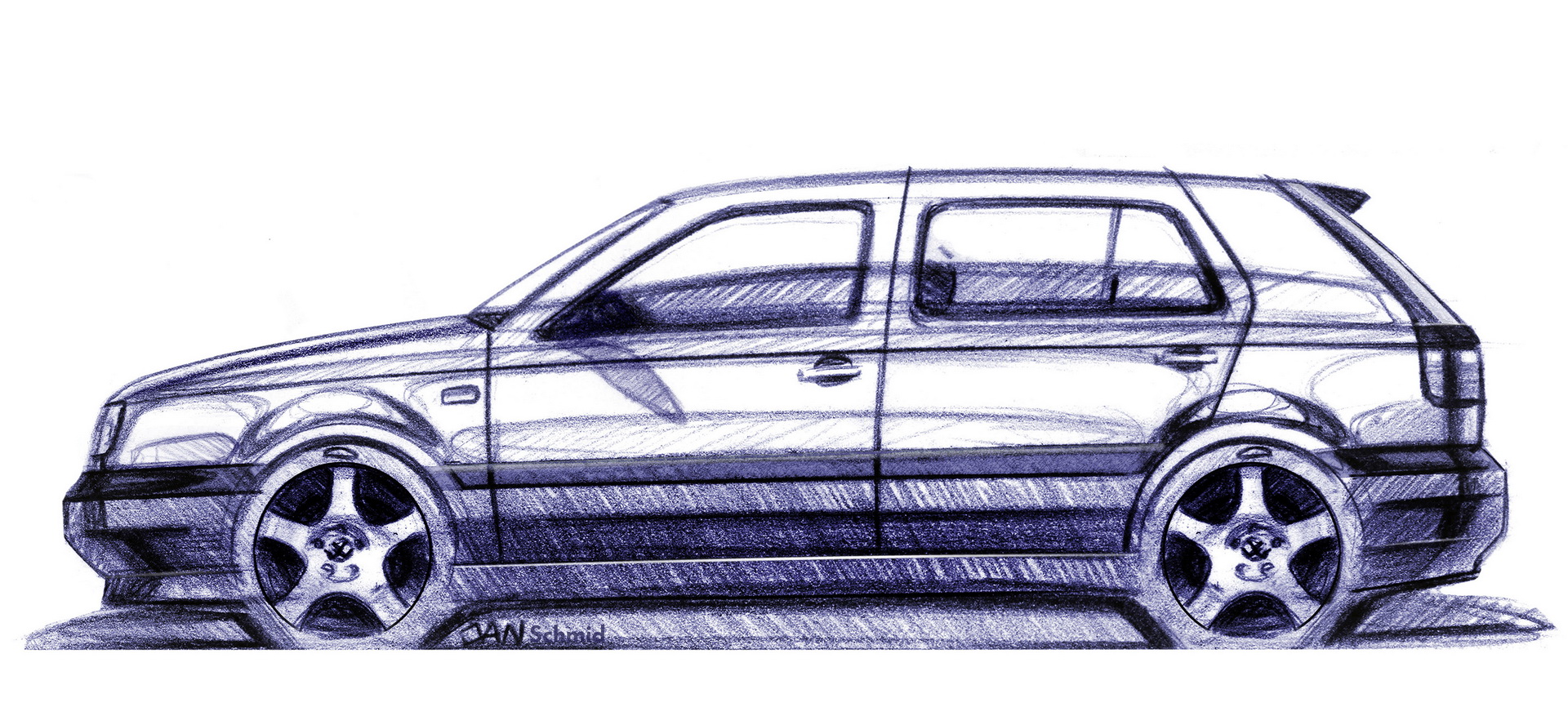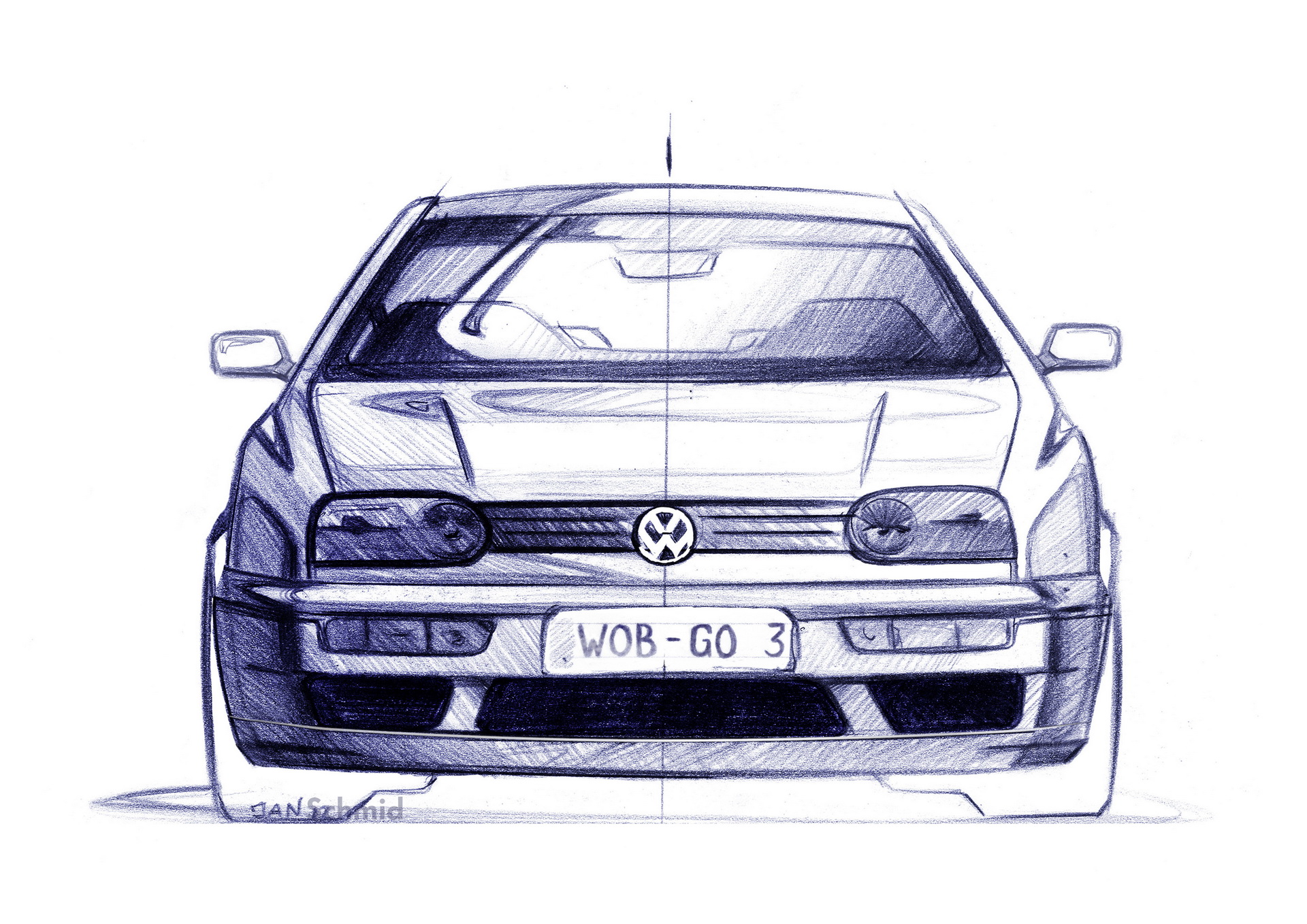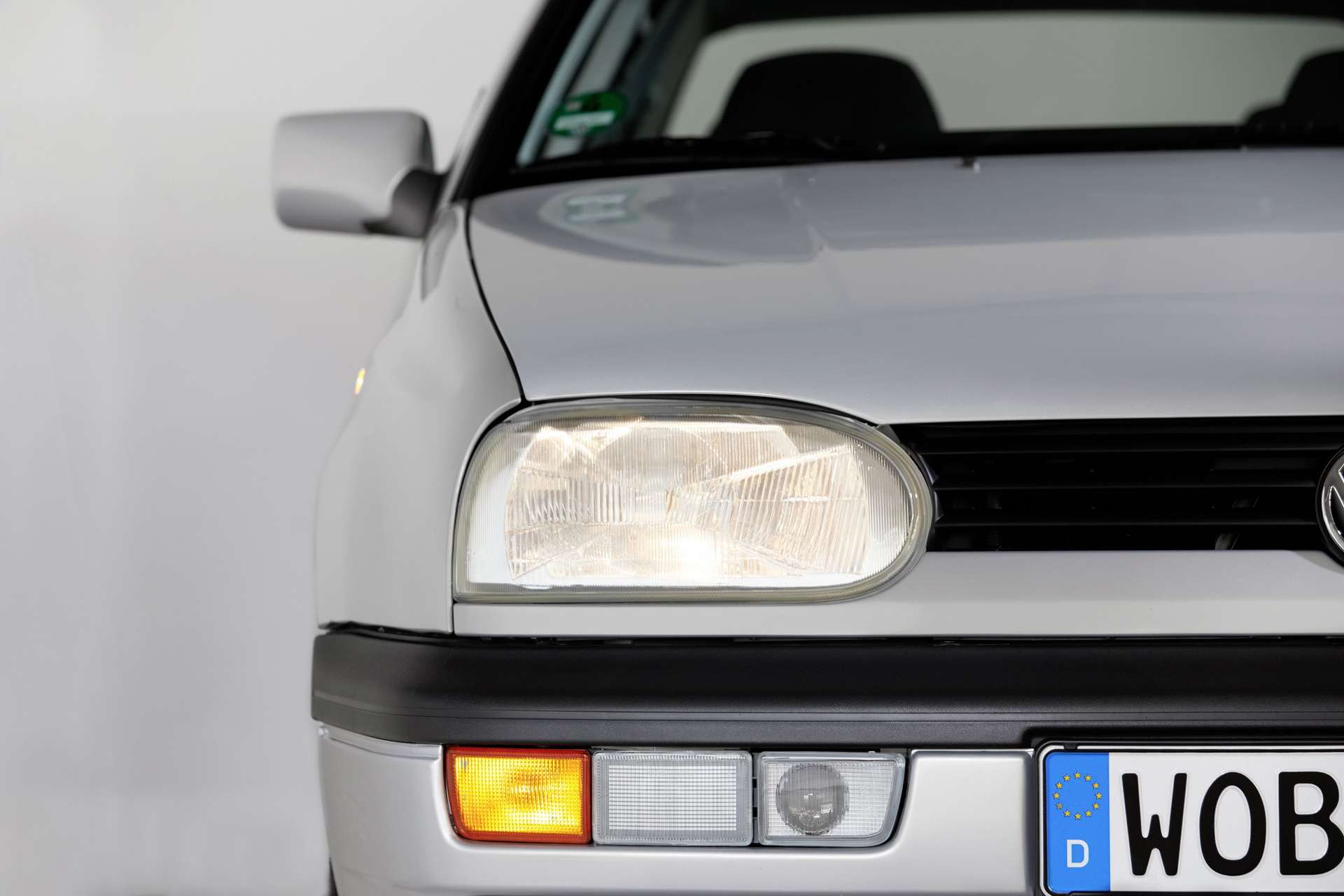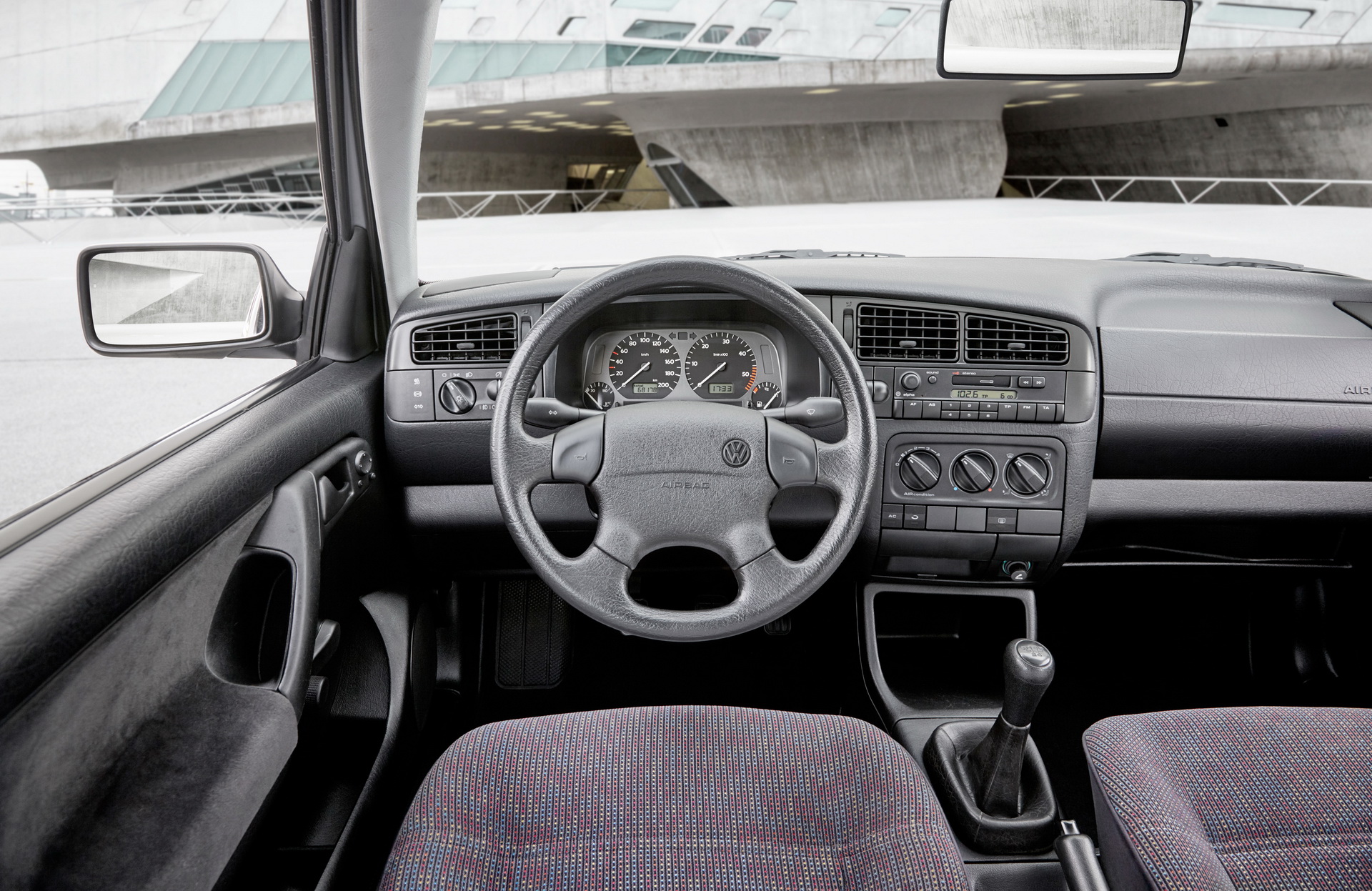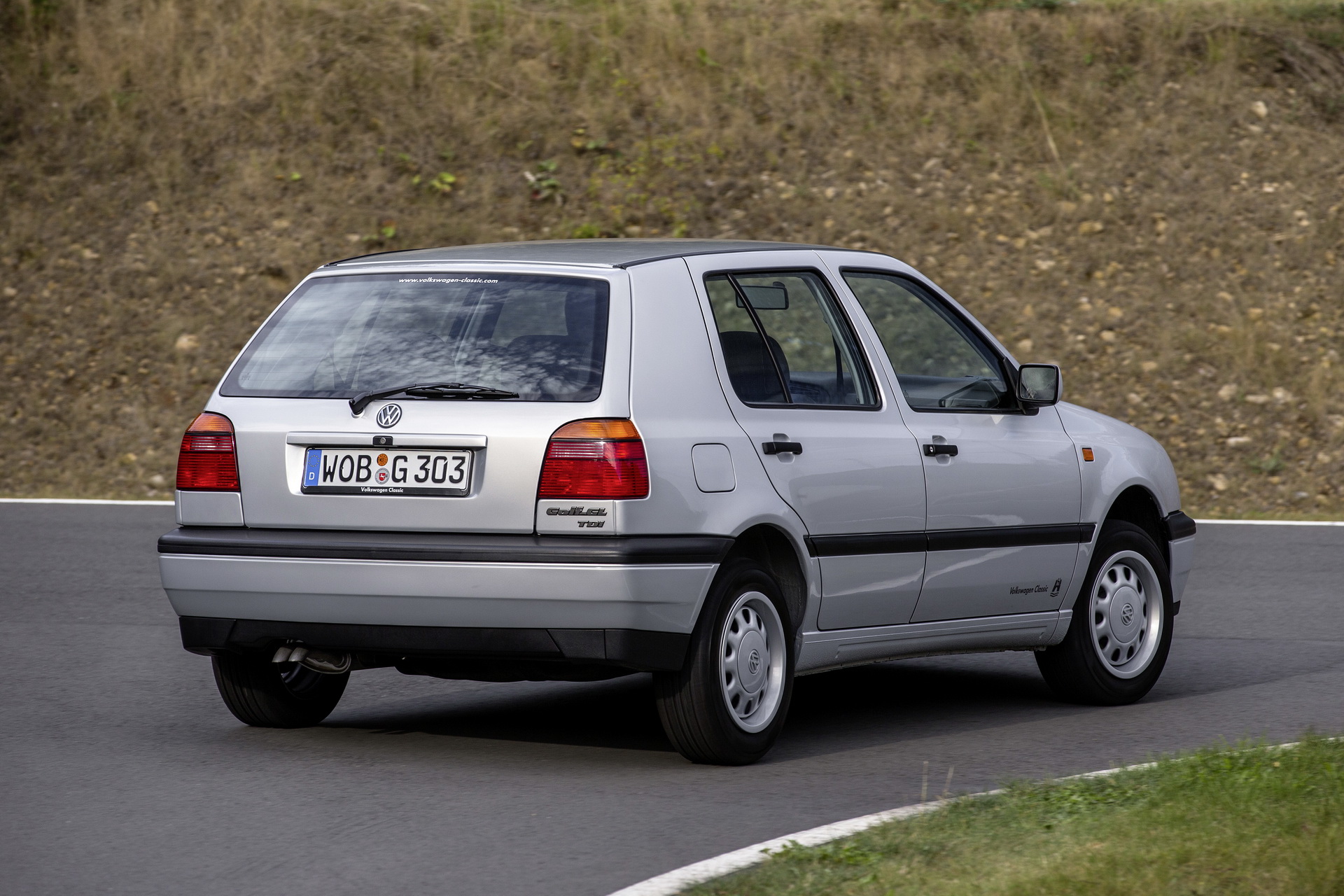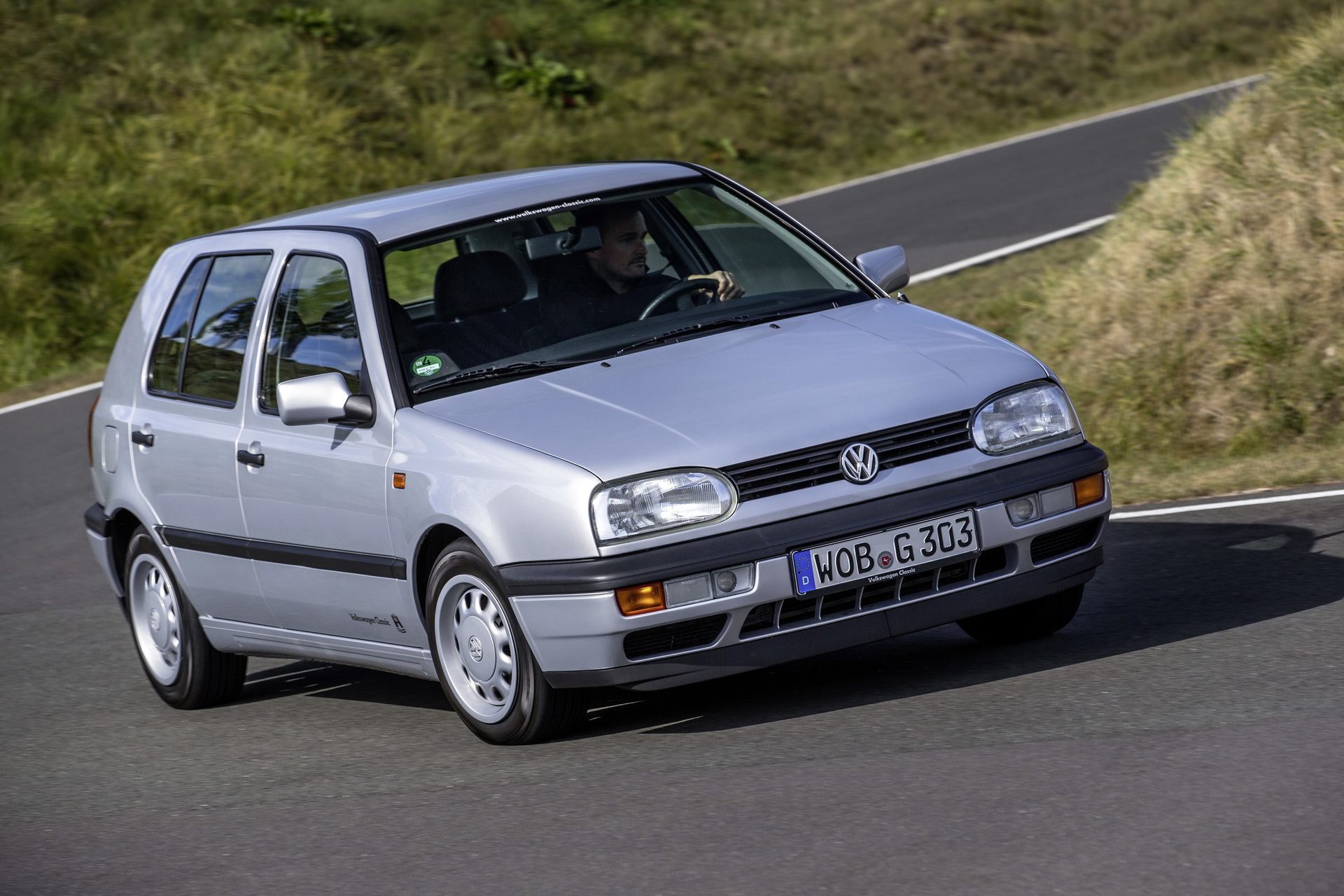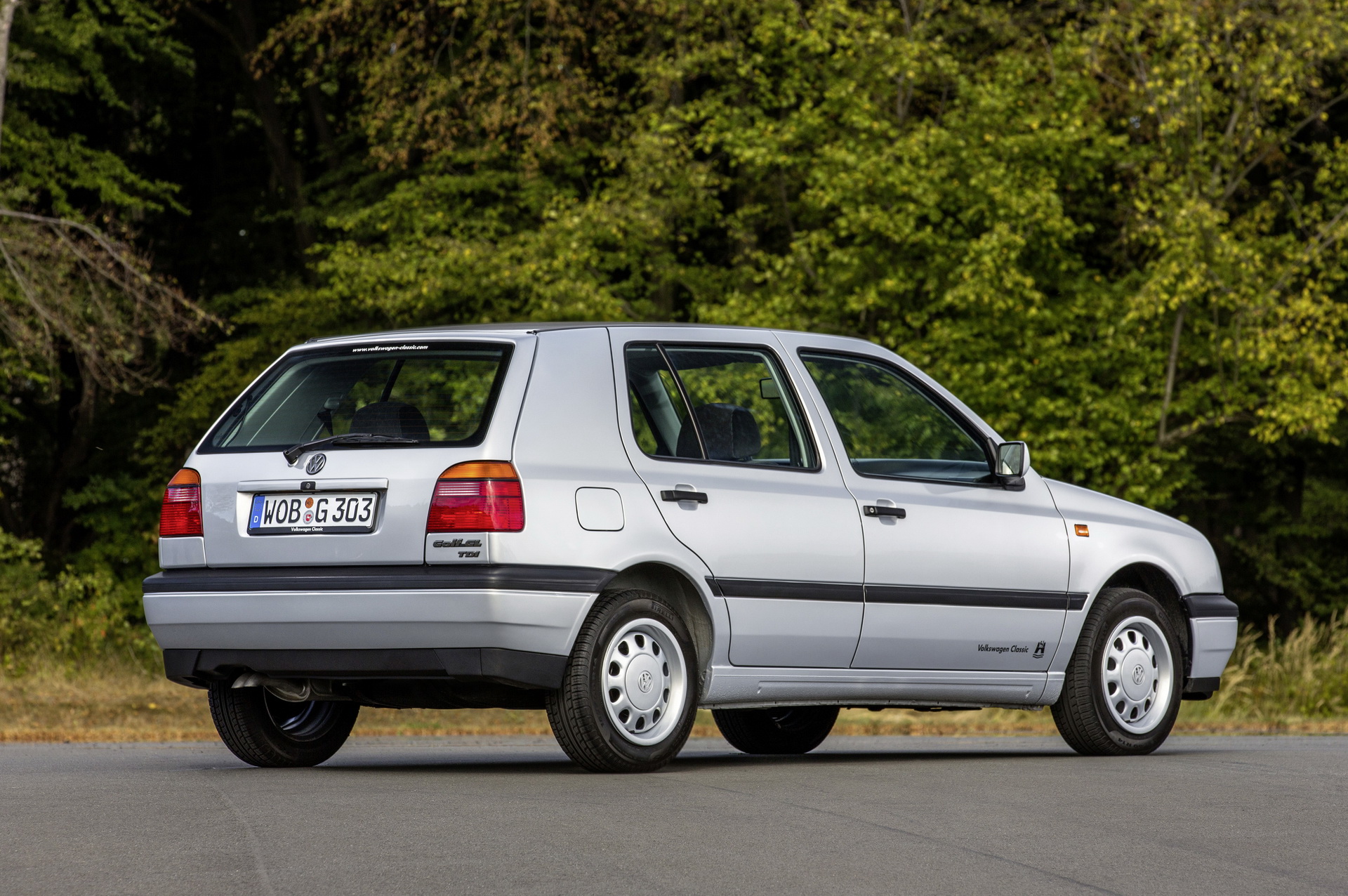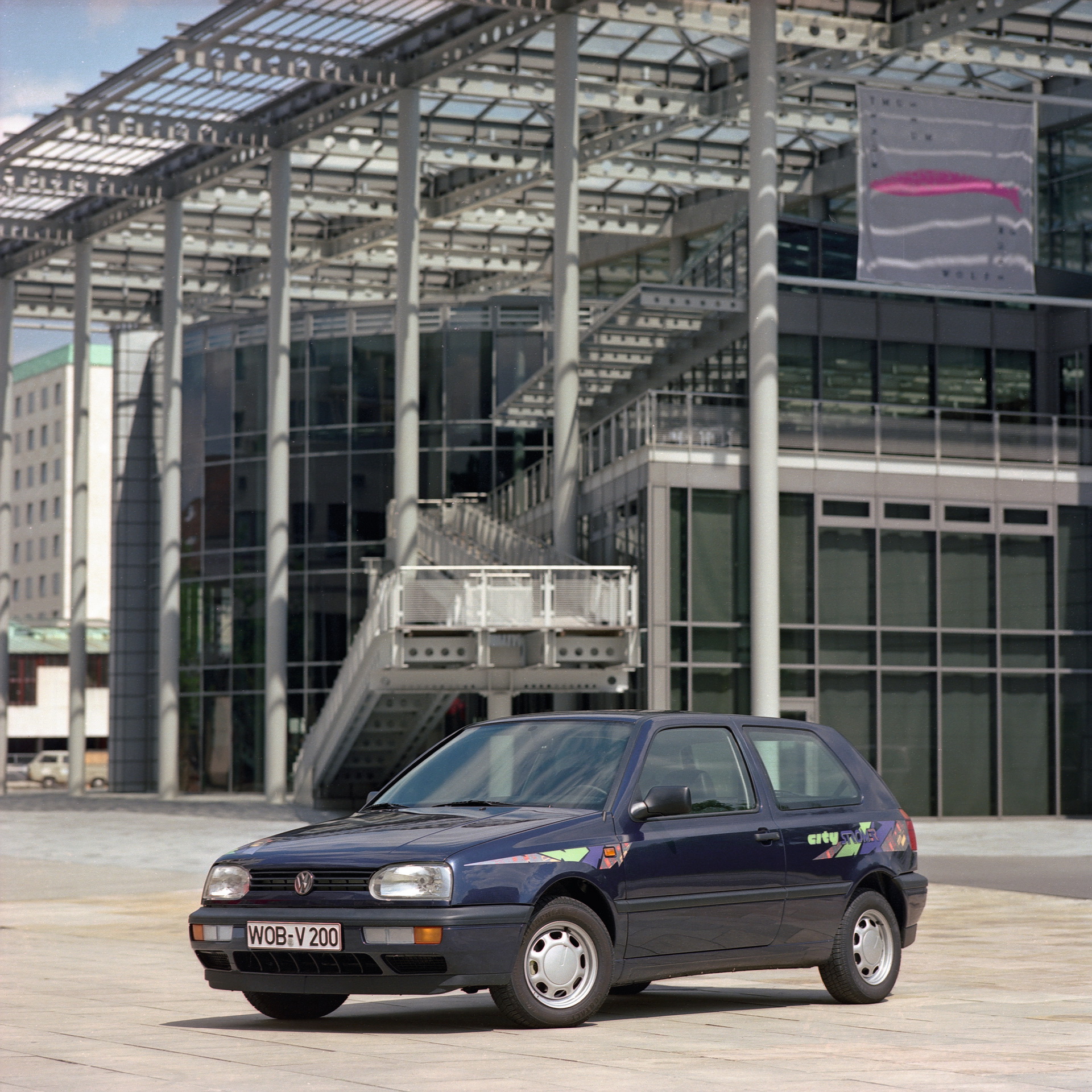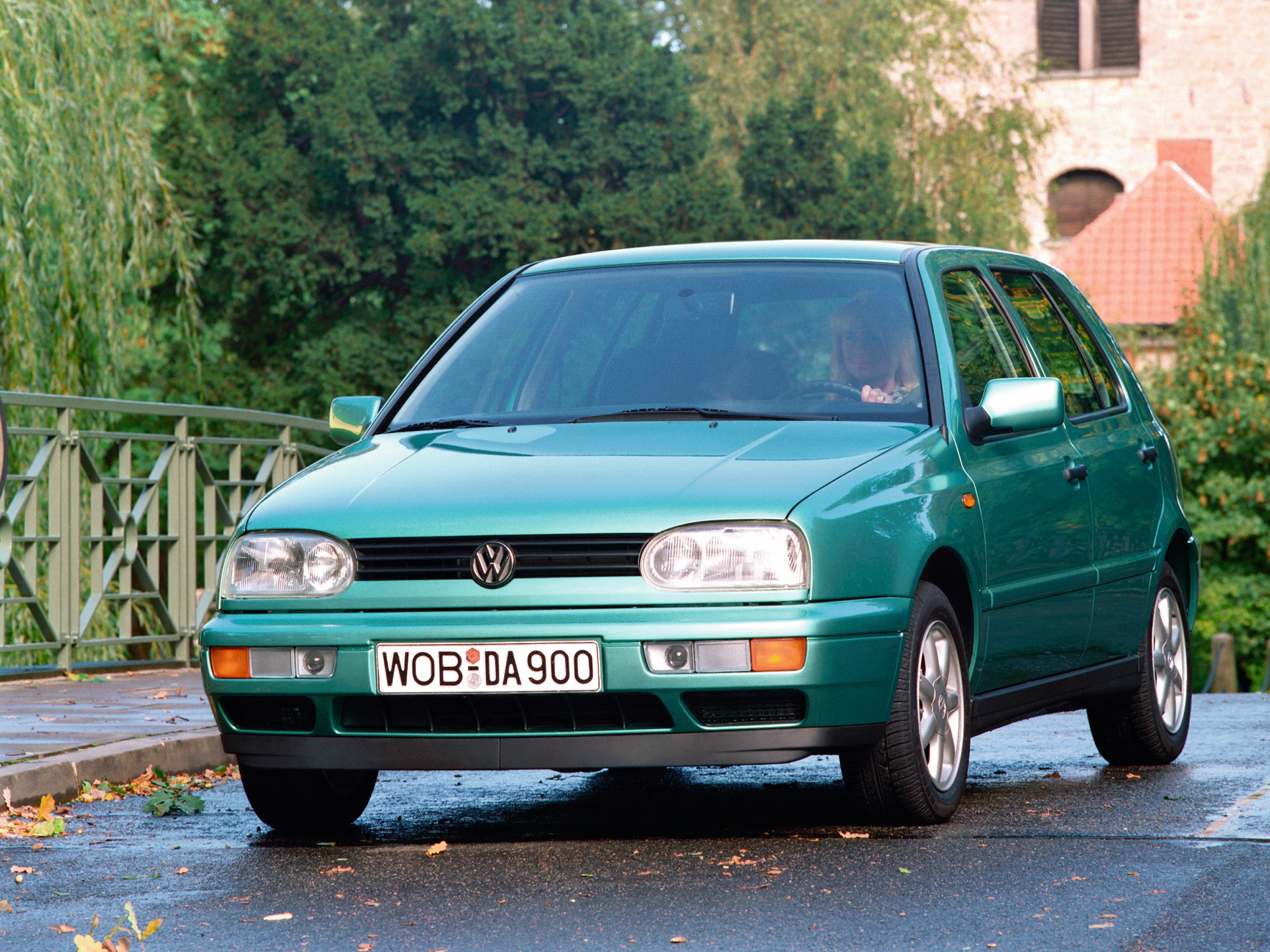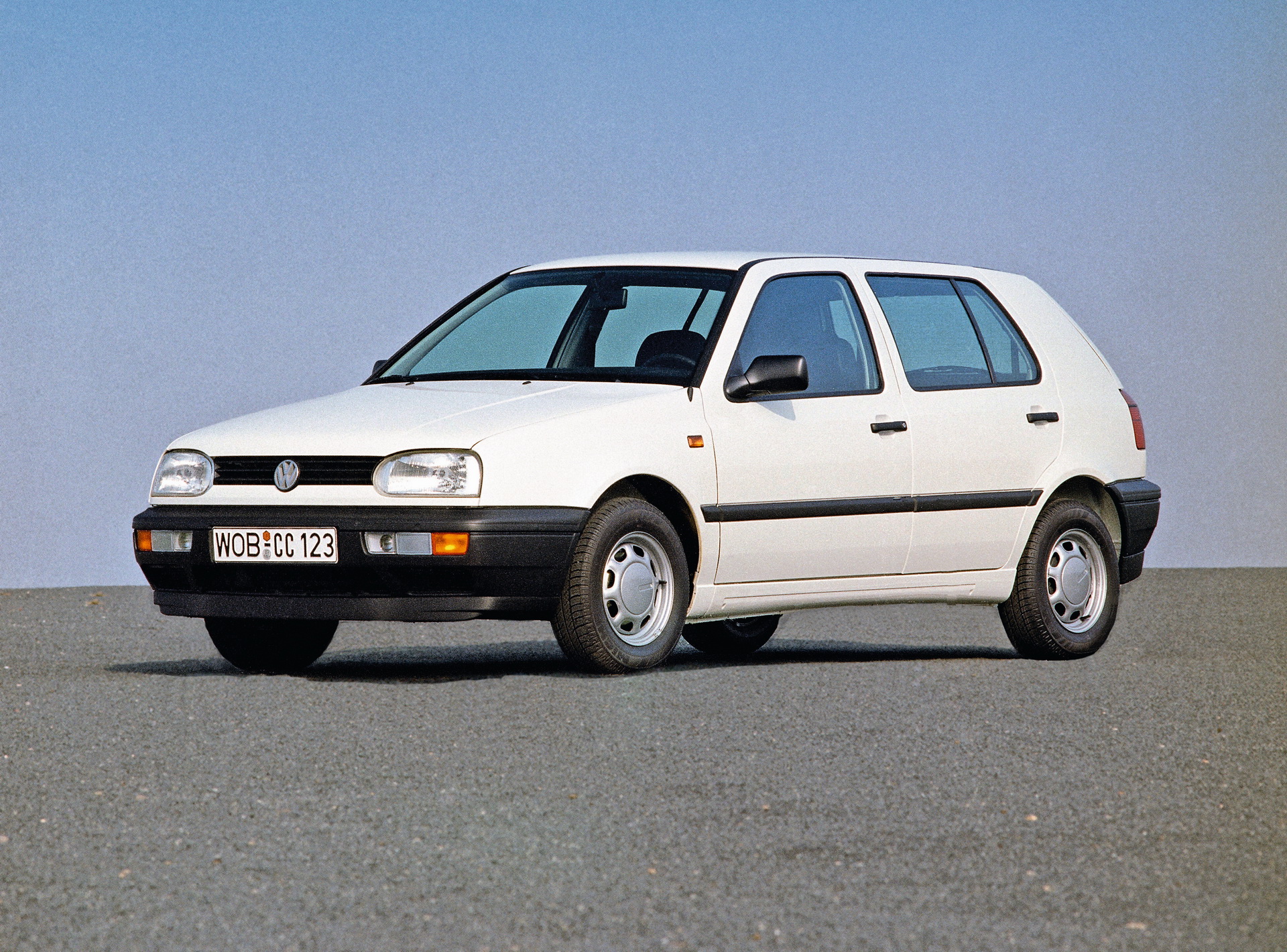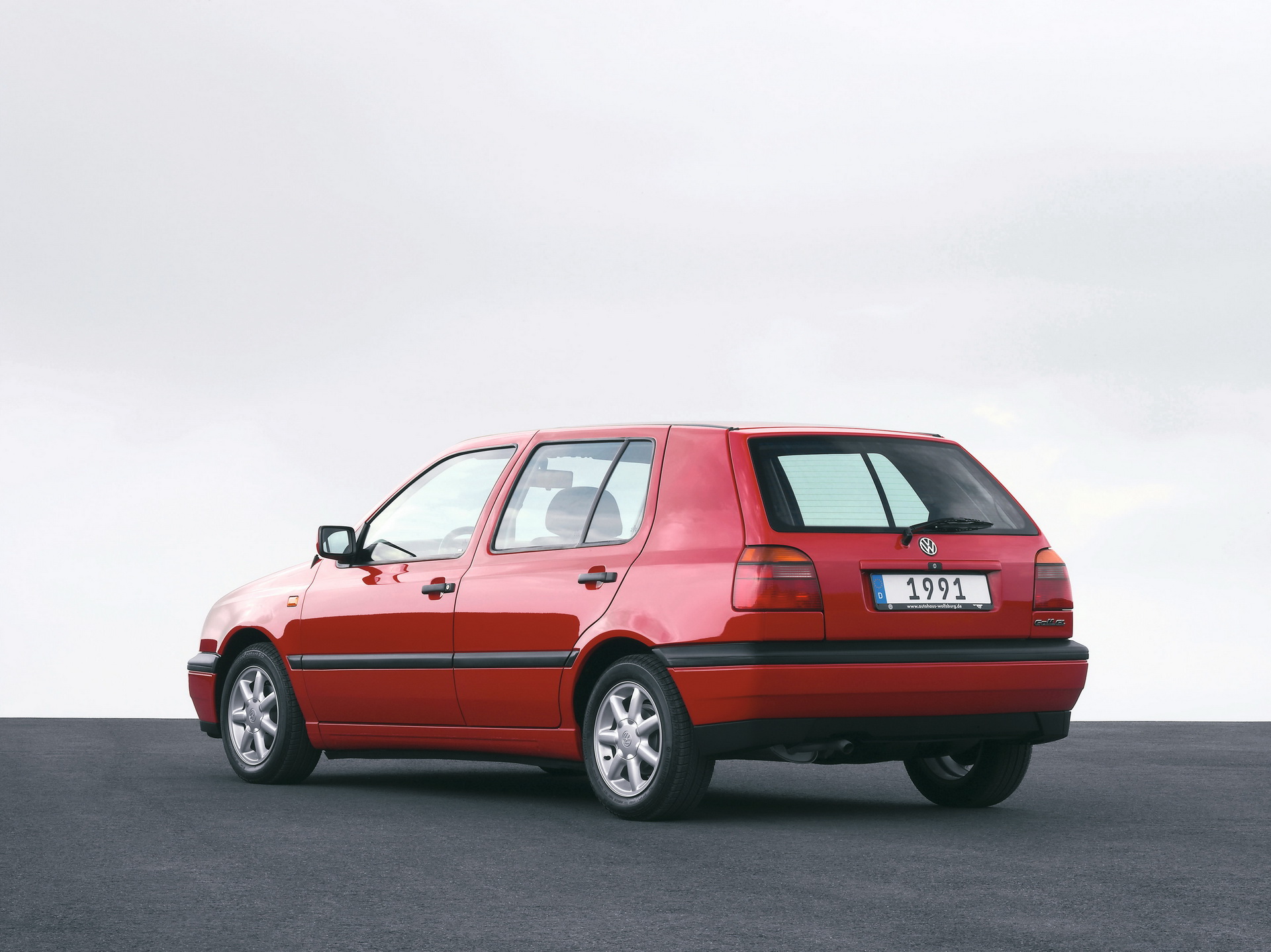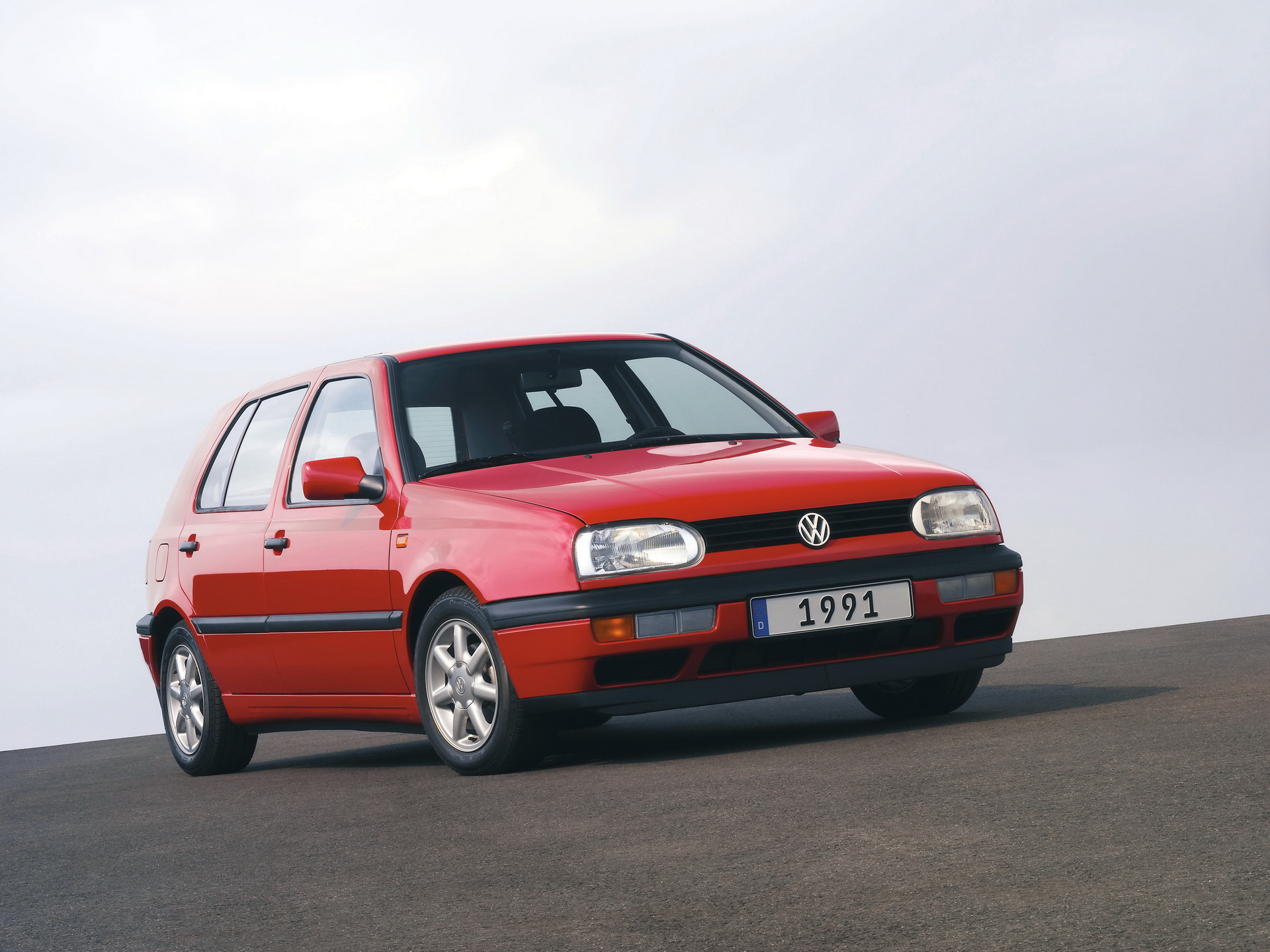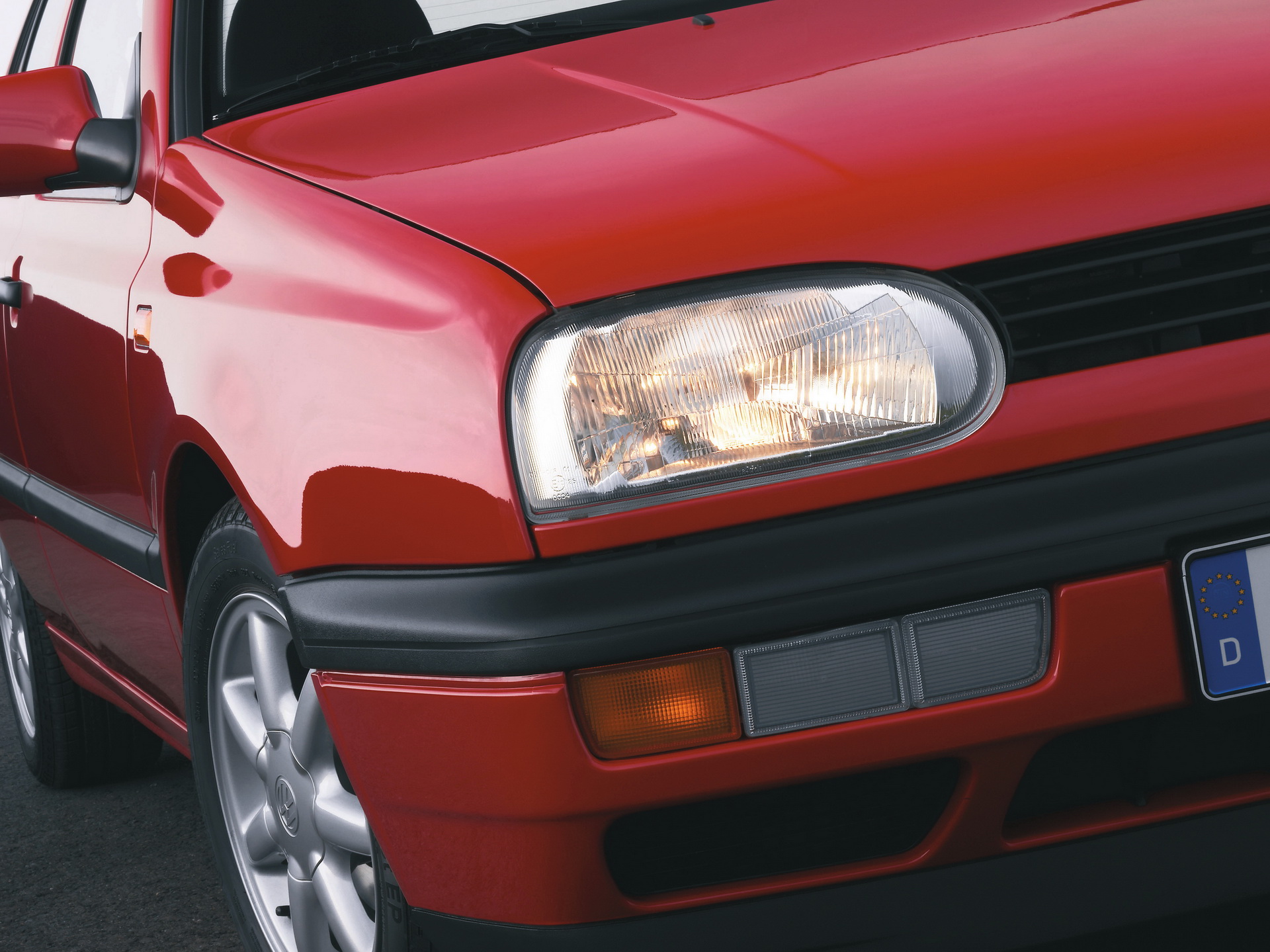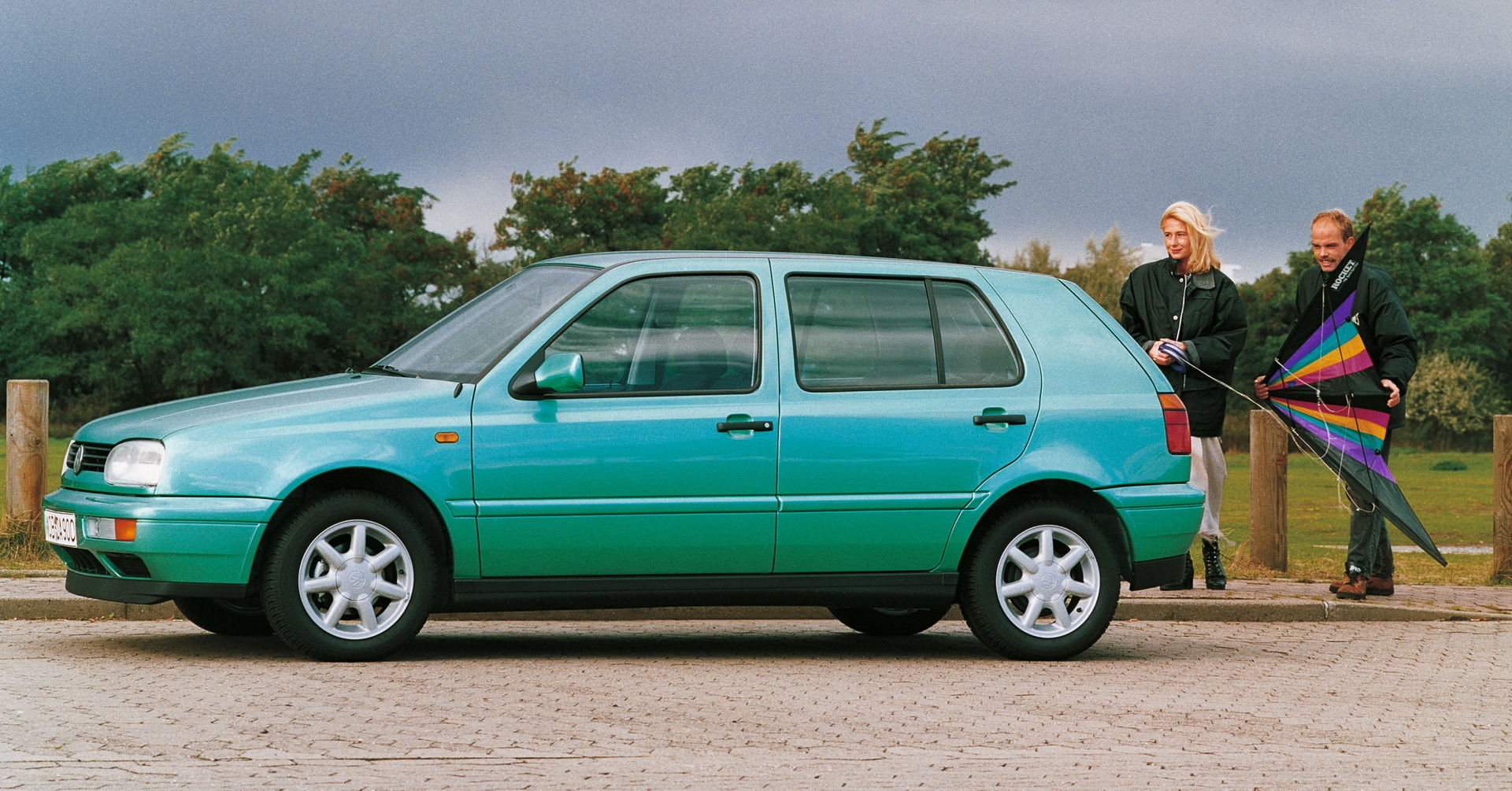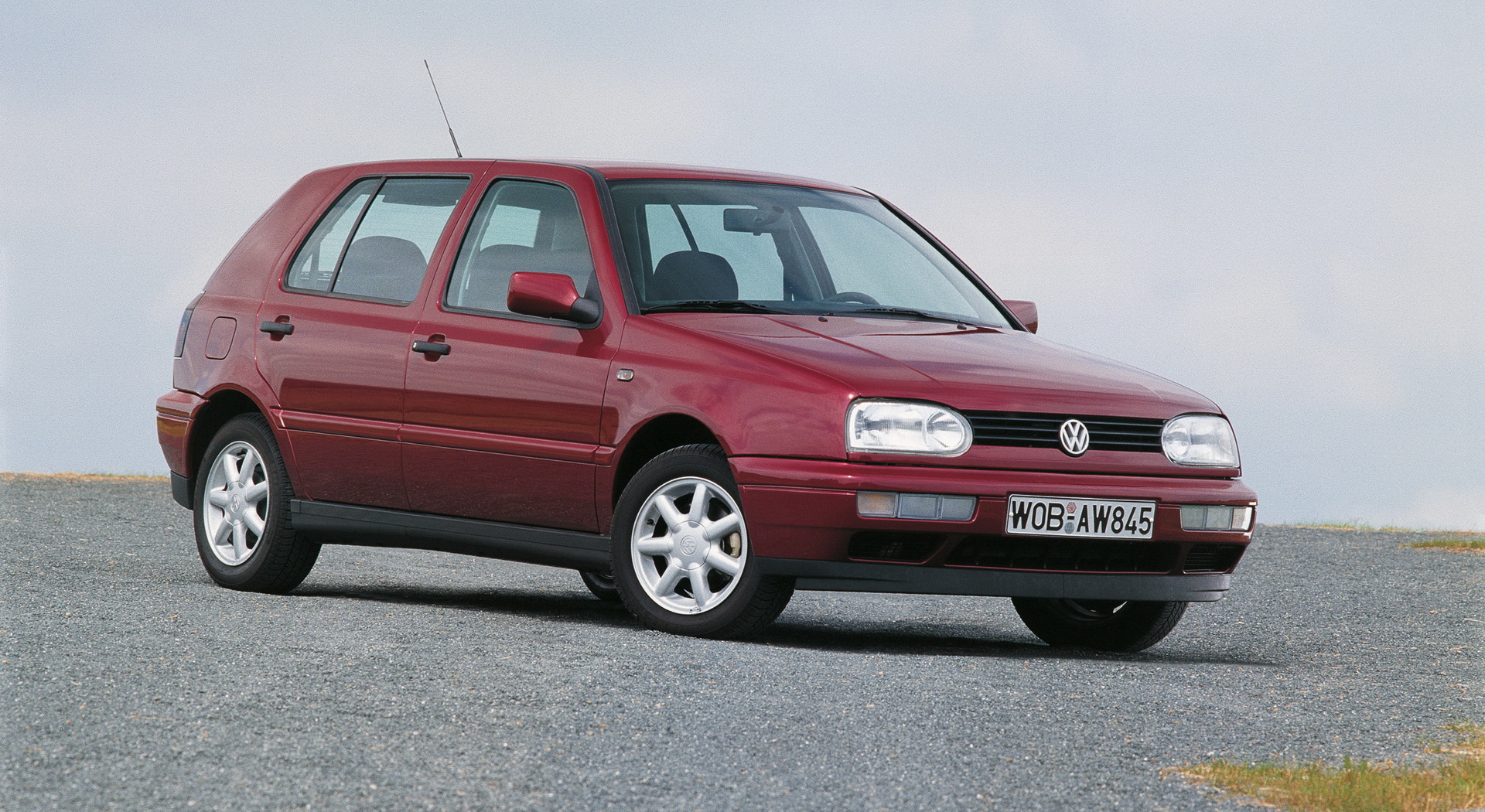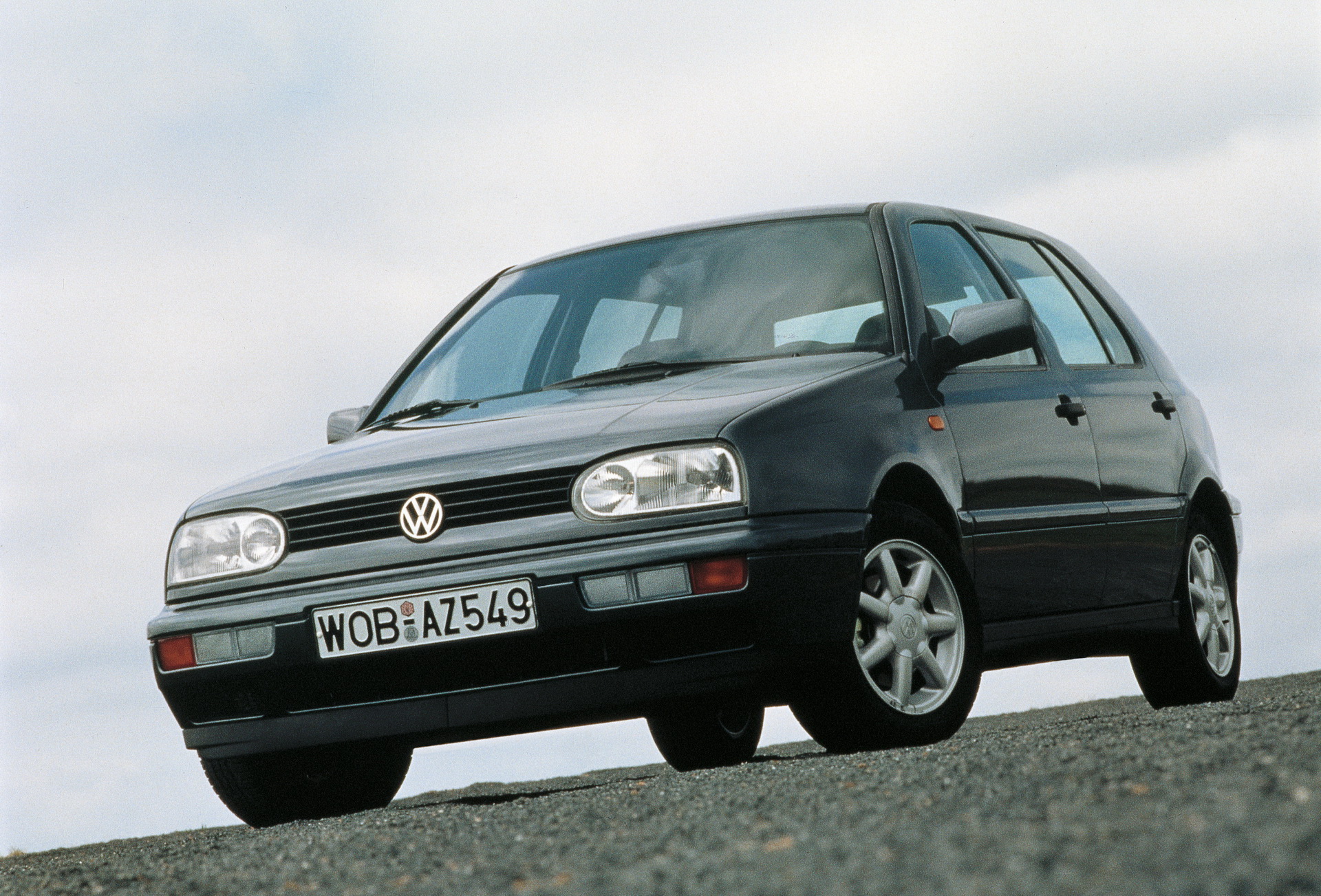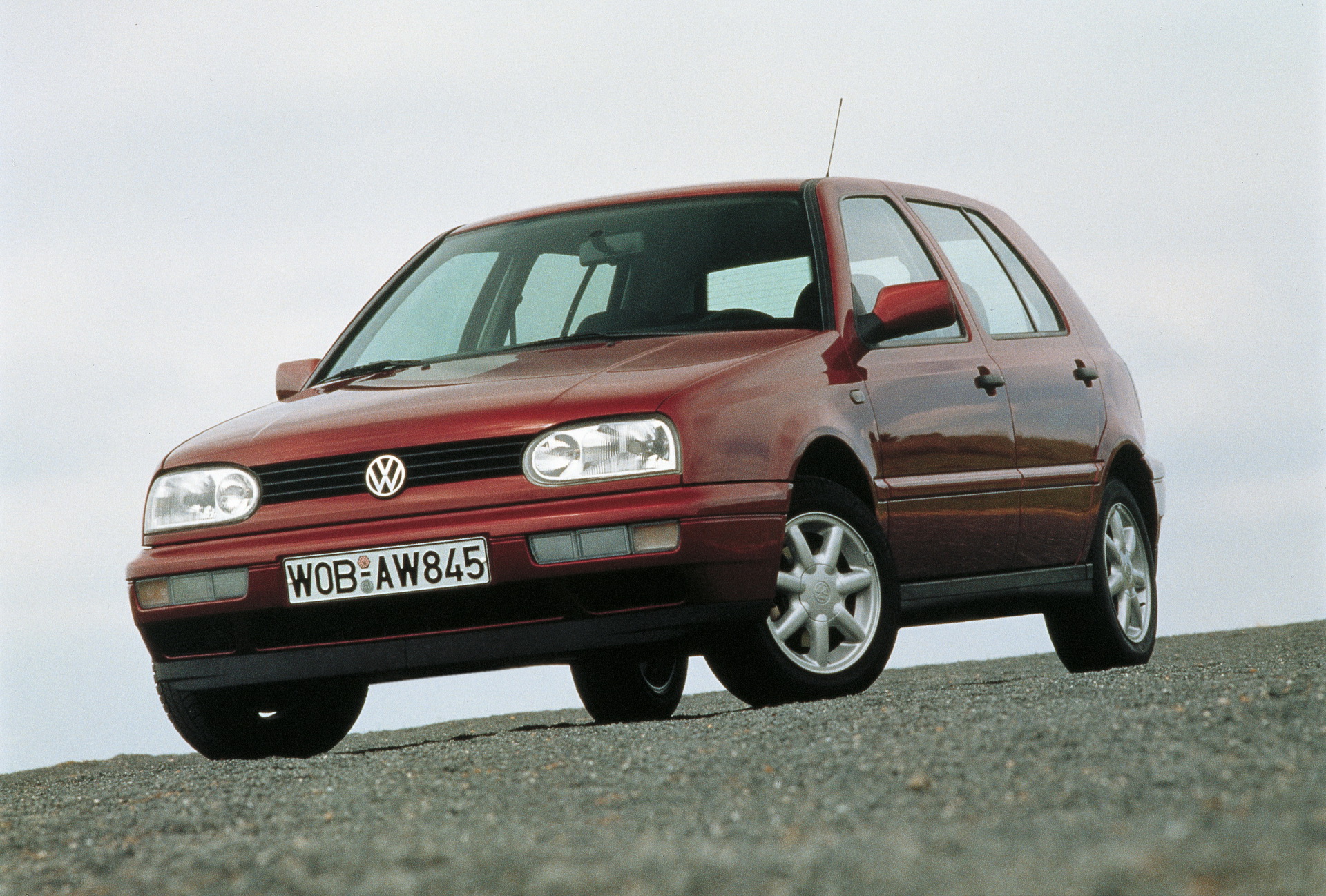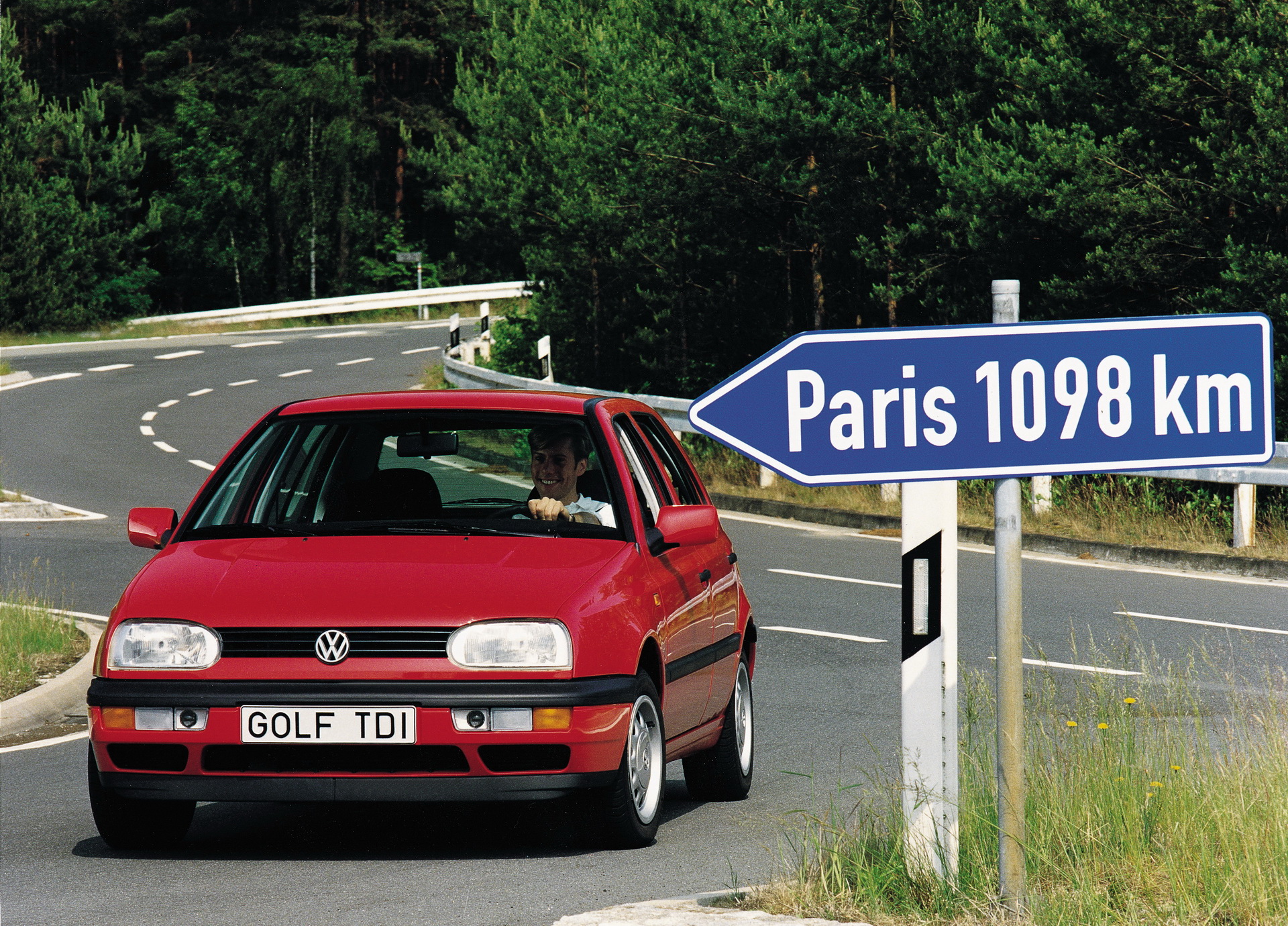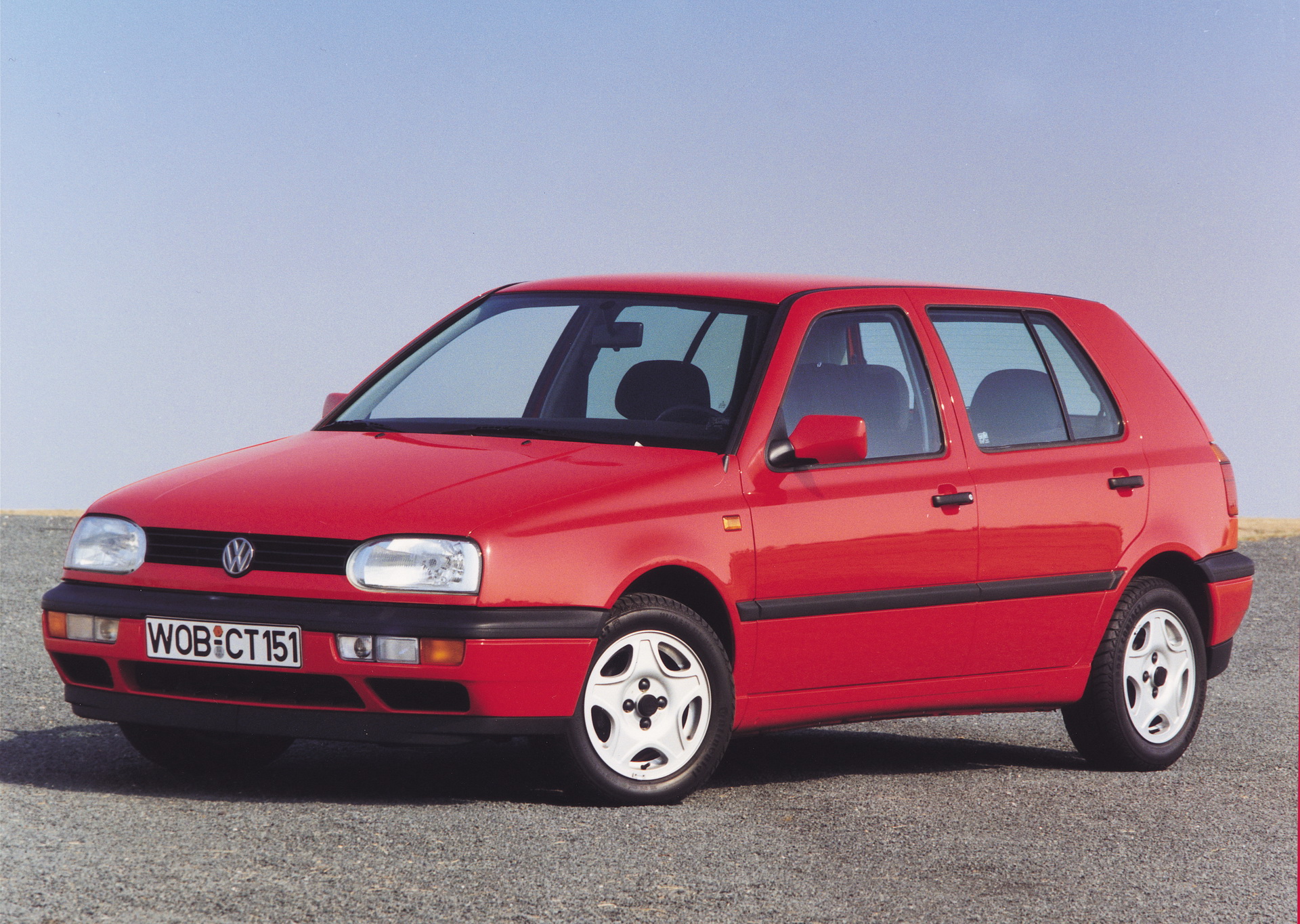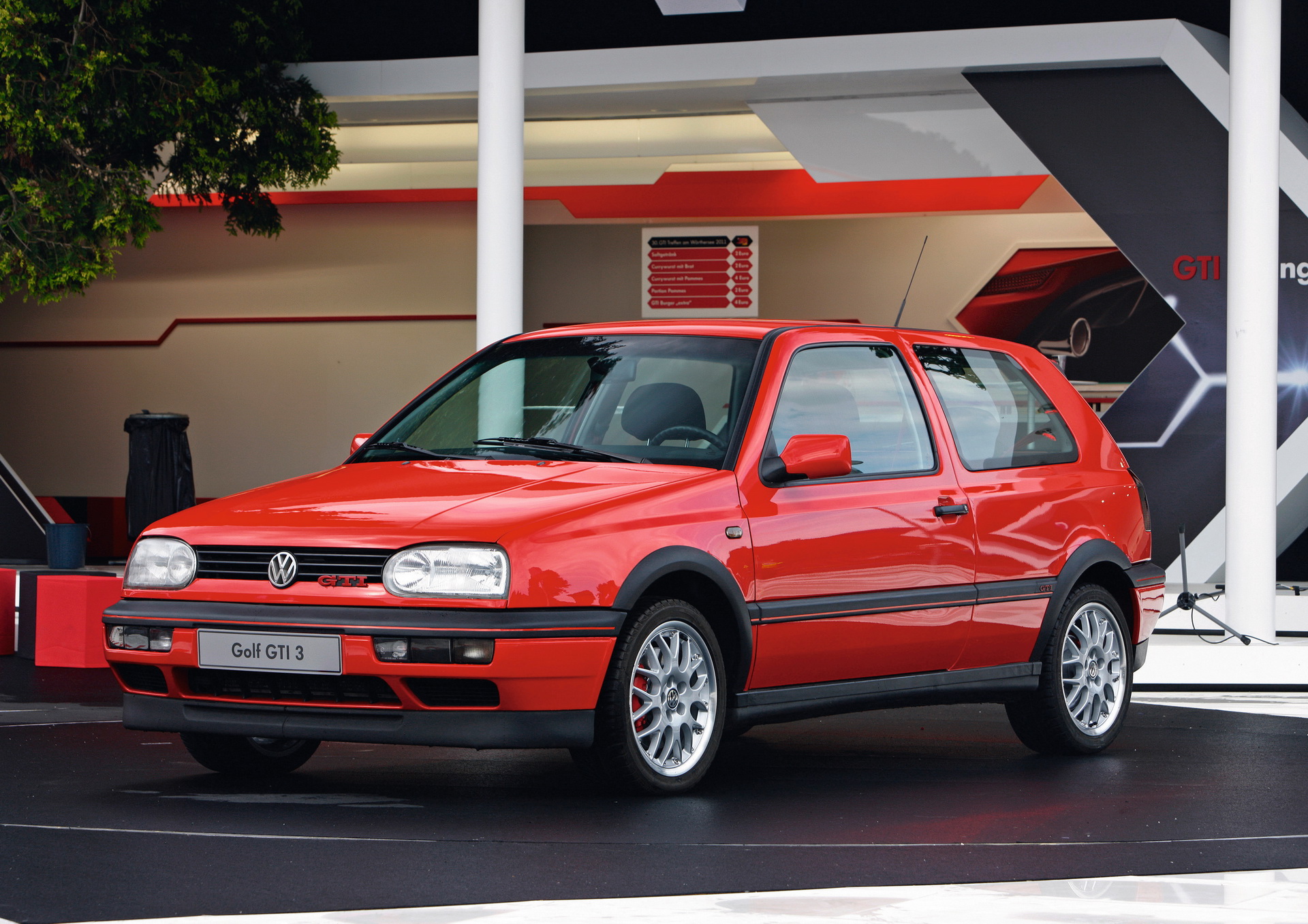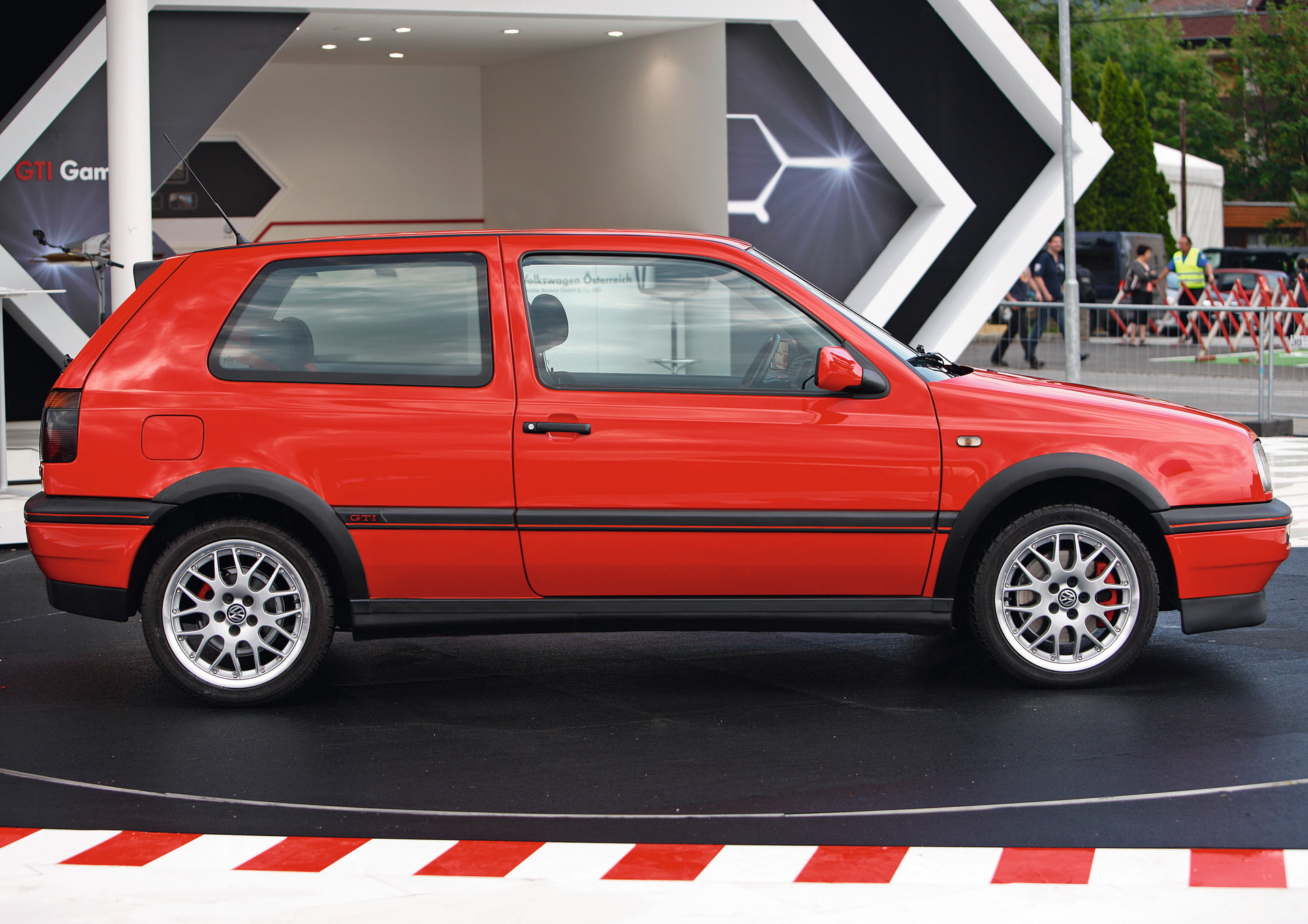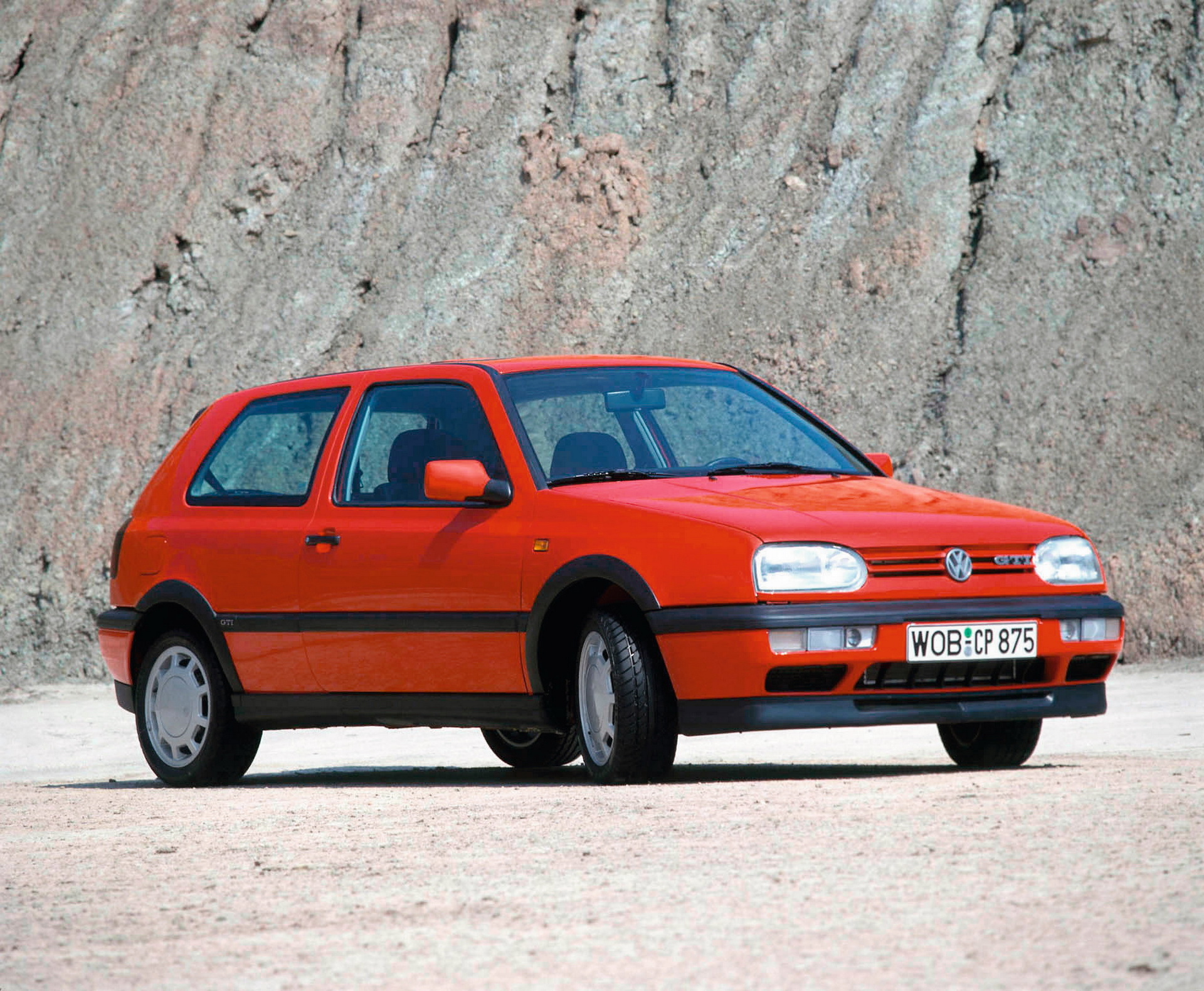This is part three of our Golf recap, where we look back at the third generation of the iconic compact hatchback.
The VW Golf Mk3 was first launched in 1991, showcasing massive improvements in the fields of safety and becoming the first Golf to offer a six-cylinder engine option. The design is best described as sober, with VW switching from straight lines to a more rounded shape which made the Golf Mk3 look much more modern than its predecessors.
It was never meant to win any beauty contests, targeting instead a middle ground.
Also Read: VW Golf Countdown: 1983-1991 Mk2 Became The Evolution Of An Icon
The highlights of the third generation Golf were to be found under the skin; VW decided to offer safety features that were usually available only on much more expensive cars, including front and side airbags combined with a cleverly designed body that had significantly improved crash properties.
VW Golf Mk3 5-Door
The VW Golf Mk3 was first launched in Europe in August 1991, with the North American market getting it almost 3 years later, in the spring of 1994. Available bodystyles included three- and five-door hatchbacks, a two-door convertible and -for the first time in a Golf- a wagon, which never made it into North America. The four-door sedan bodystyles were marketed as the Jetta or Vento, depending on the region.
Engines available started from the base 1.4-liter petrol four-cylinder and reached all the way up to a 2.9-liter VR6 engine in the range-topping VR6 Synchro. The VW Golf Mk3 also got the first direct injection diesel engine with the 1.9 TDI. Diesel models featured for the first time an oxidising catalytic converter as well.
The VW Golf Citystromer was produced between 1993 and 1996
VW also produced 120 examples of the Golf Mk3 Citystromer, a fully electric version of the compact hatchback. The electric Golf Mk3 could travel for up to 90 km (56 miles) at a constant speed of 50 km/h (31 mph), which was remarkable for the era. Charging the battery up to 80 percent took just 90 minutes too, not to mention the standard braking energy recuperation.
VW Golf GTI
Perhaps the most criticized aspect of the VW Golf Mk3 was the GTI model, which was powered by a 2.0-liter four-cylinder petrol with around 150 HP; reviews at the time said that the supposedly ‘hot’ version of the Golf lacked the excitement and the charisma of its predecessors. VR6 models offered a slightly more special experience but still, don’t expect a spine-tingling driving experience here.
Overall, the VW Golf Mk3 isn’t the most loved member of the Golf family but it did pave the way for the later generations in terms of safety and unoffensive neutral styling.
VW Golf Mk3 Interior
VW Golf Mk3 timeline
- 1991 Debut of the third Golf generation
- 1991 VR6 engine as the first six-cylinder in the compact class
- 1992 Driver and front passenger airbags
- 1993 Debut of the first Golf Variant
- 1993 Debut of the second Golf Cabriolet
- 1993 Debut of the second Golf syncro generation
- 1993 The first turbo diesel direct injection engine (TDI) in a compact vehicle
- 1995 The first suction diesel direct injection engine in a compact vehicle (SDI)
- 1996 ABS becomes standard for all Golf vehicles
- 1996 Side airbags in the Golf “Family” special model fitted as standard, as option in all other Golf models
- 1996 Phase-out of the third generation after 4.83 million vehicles produced.




